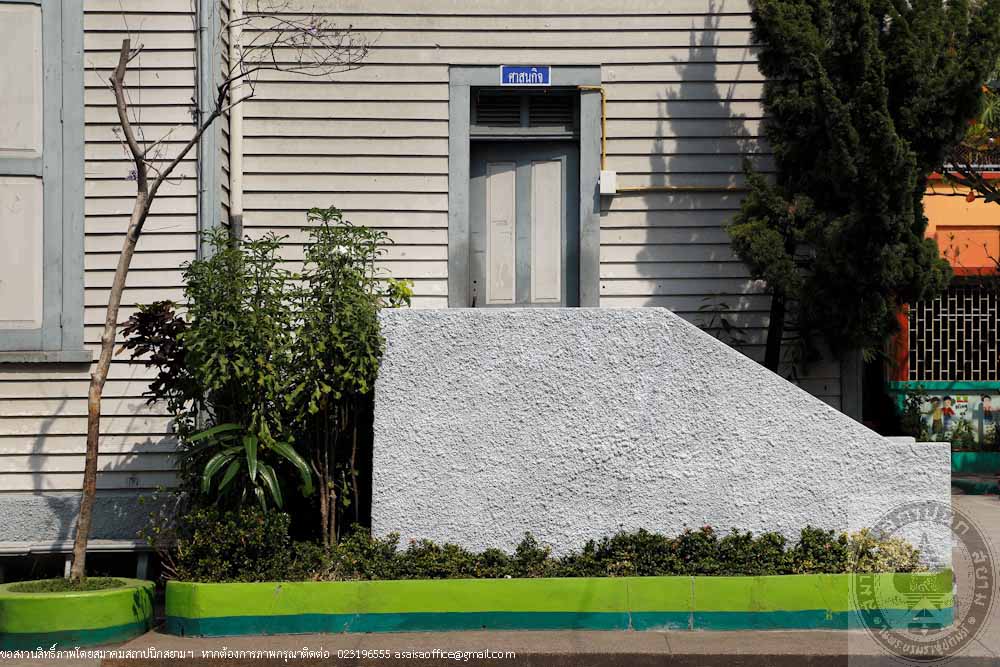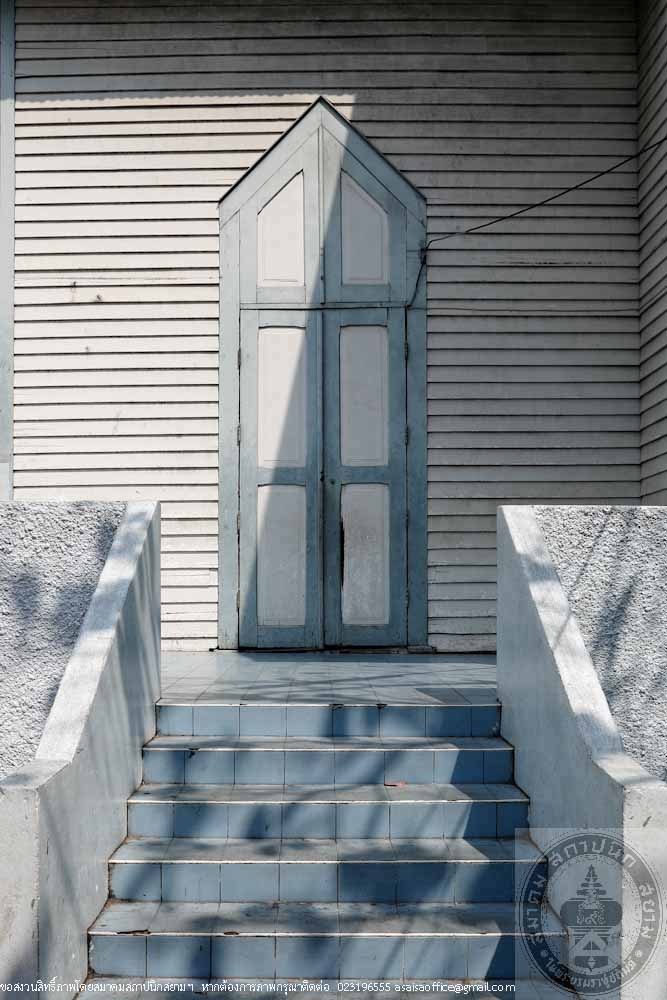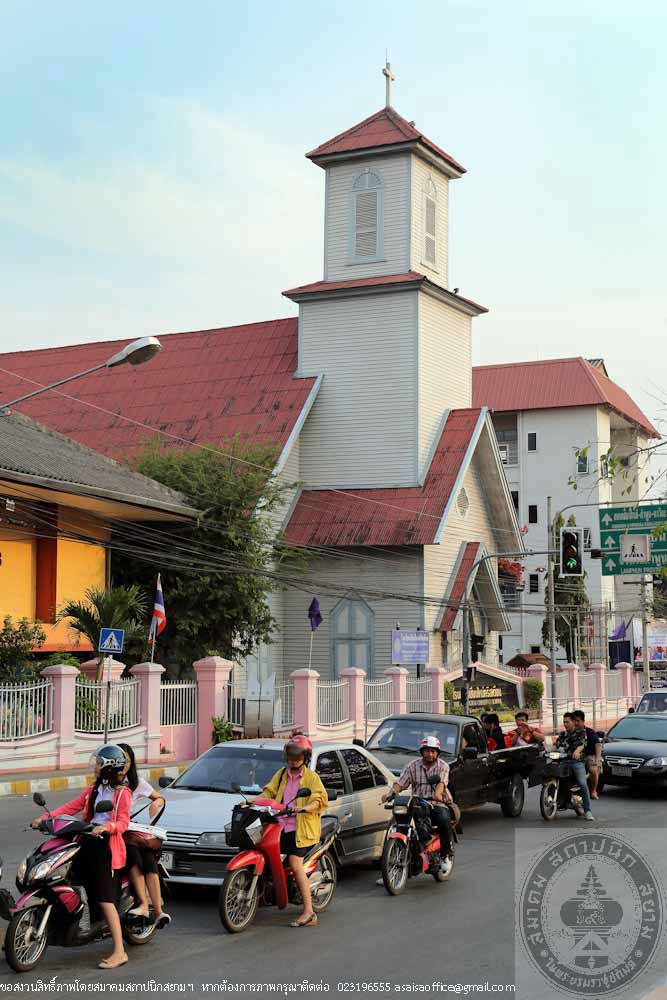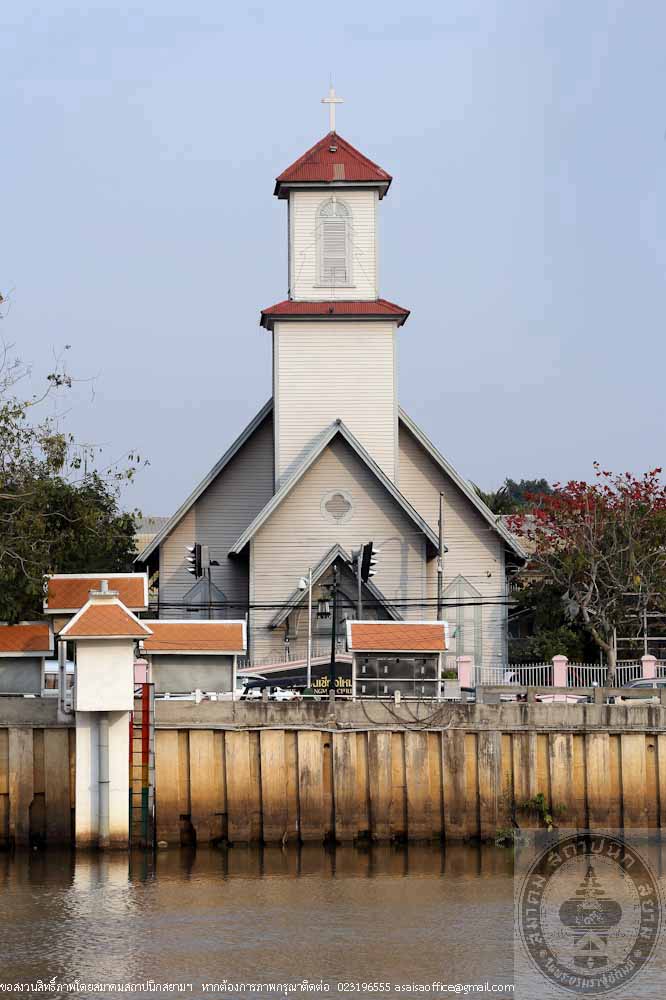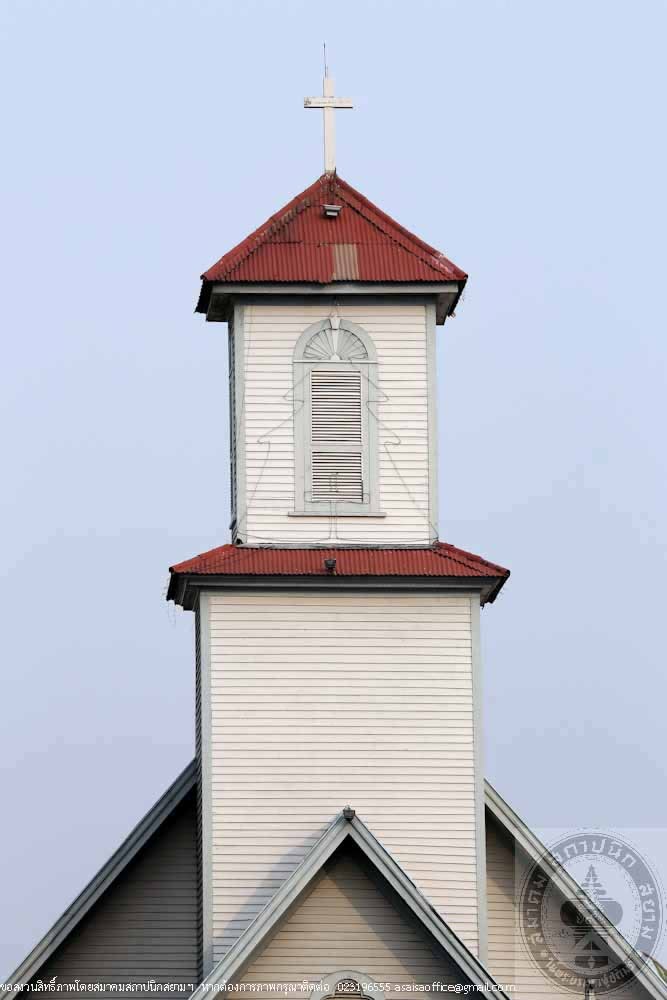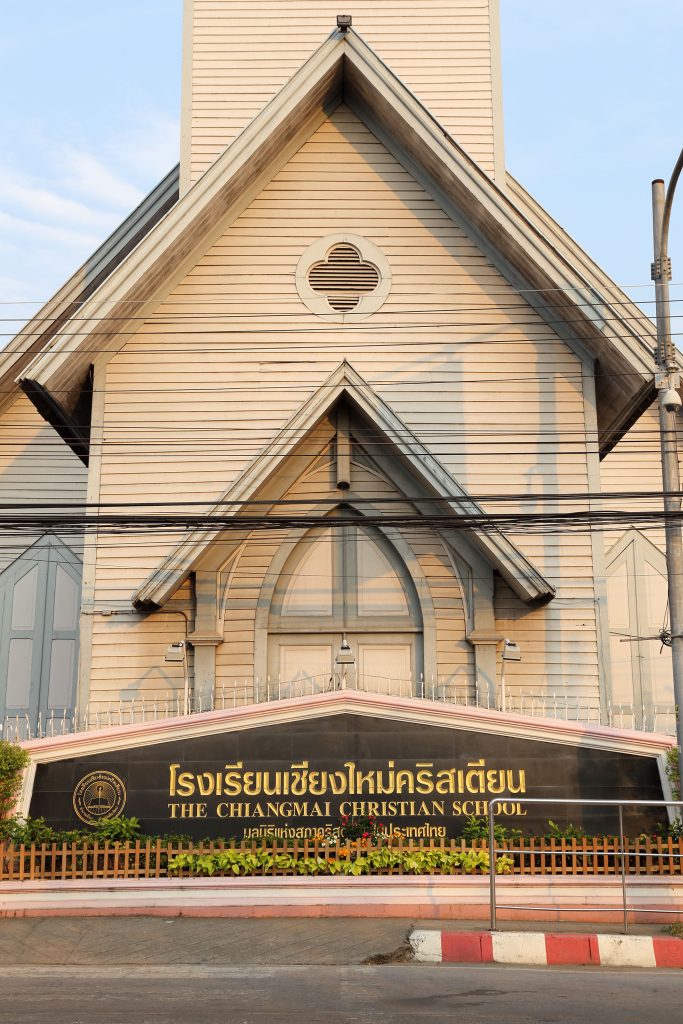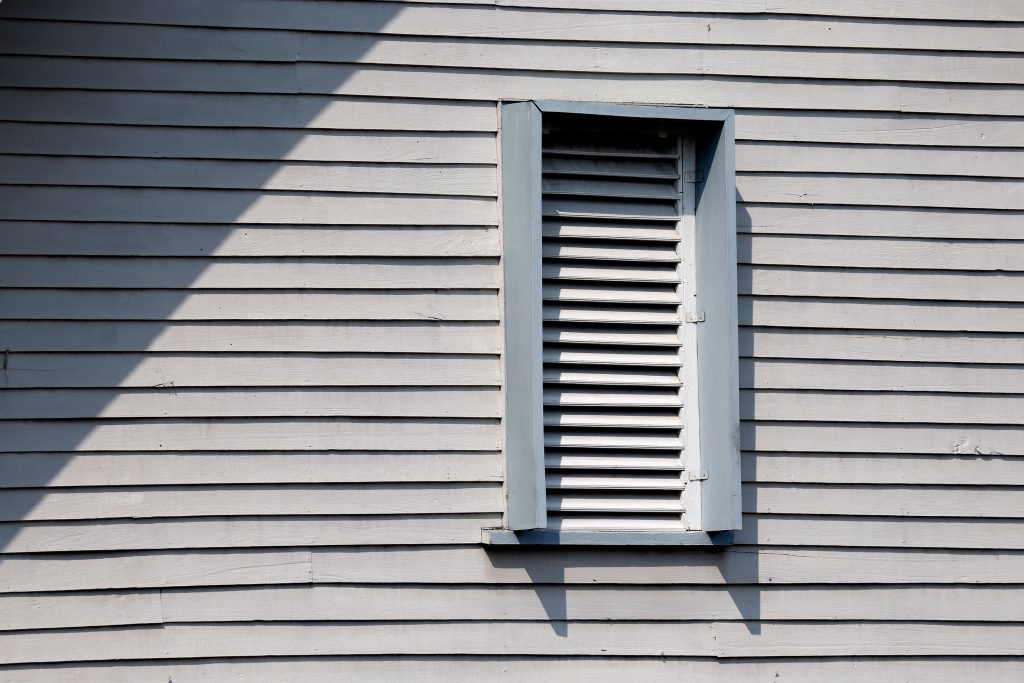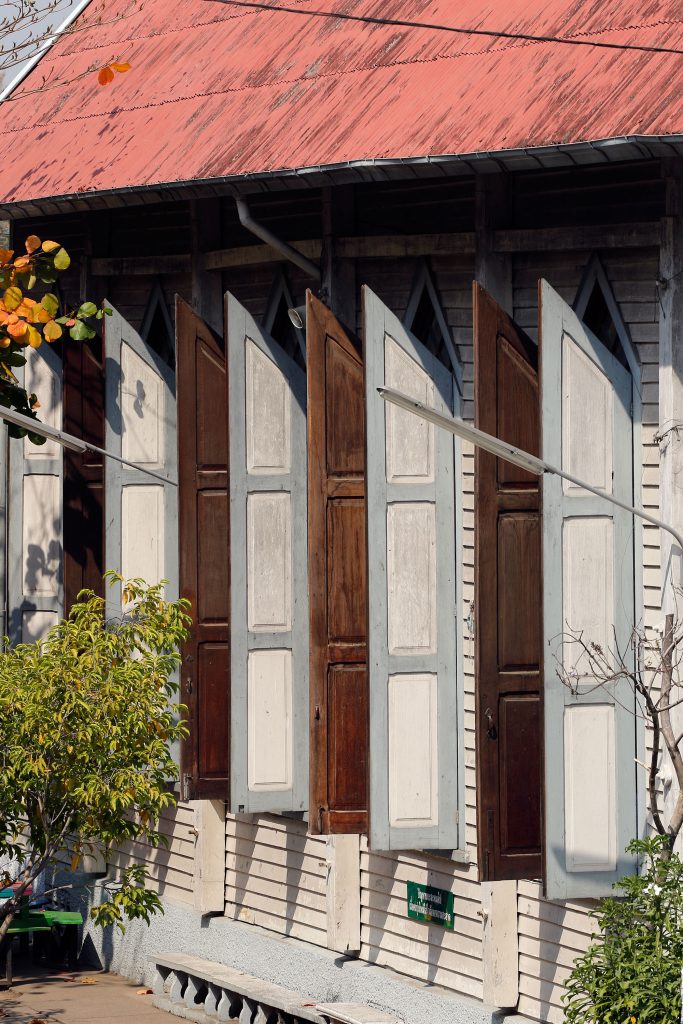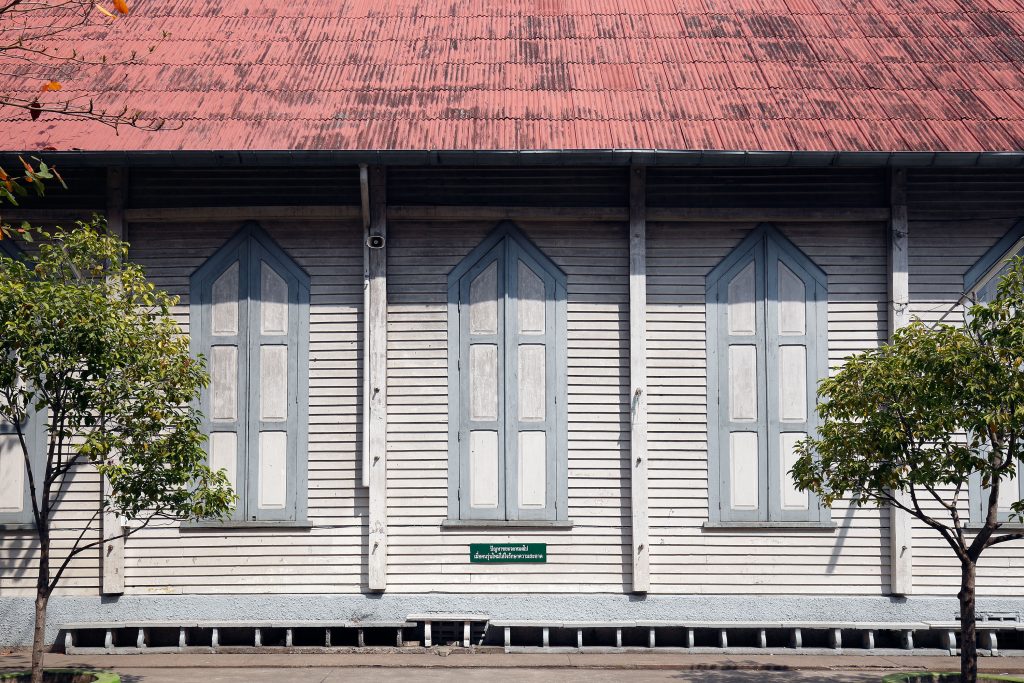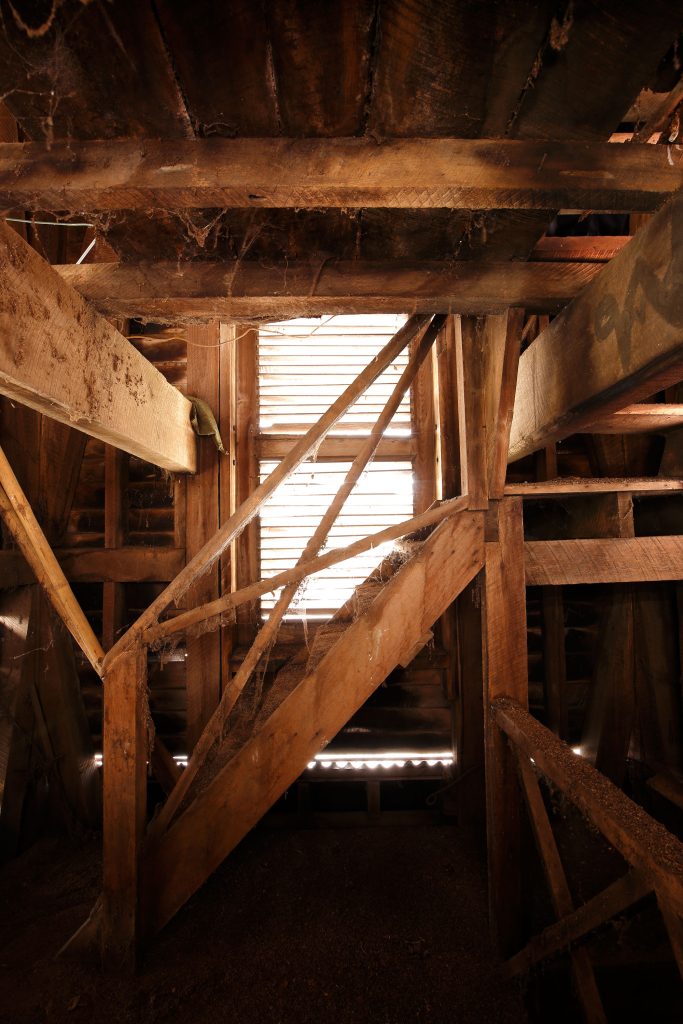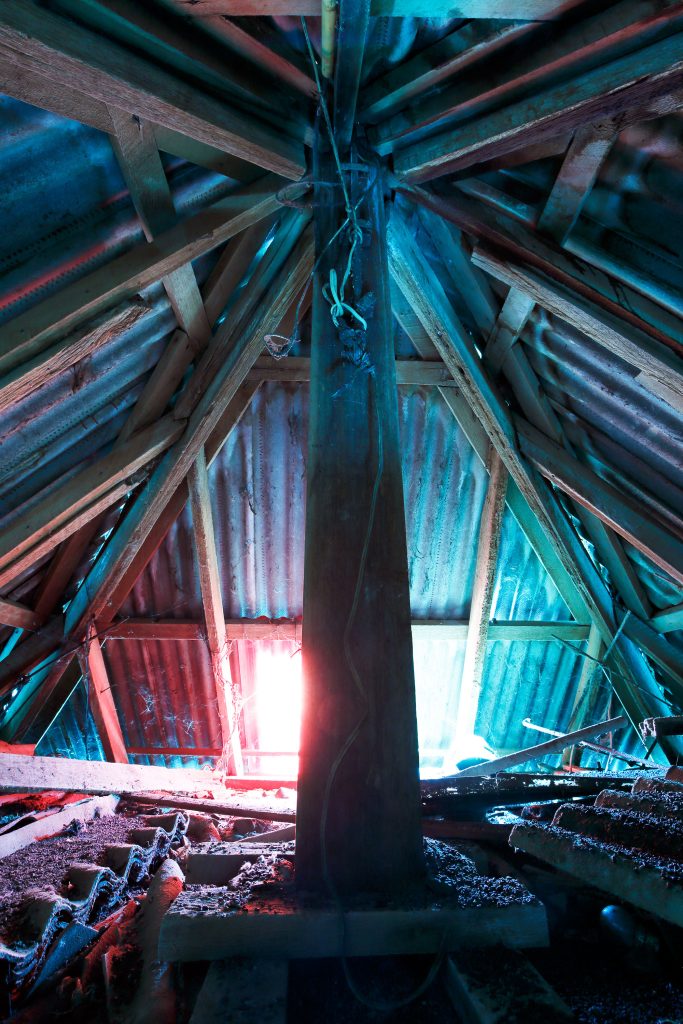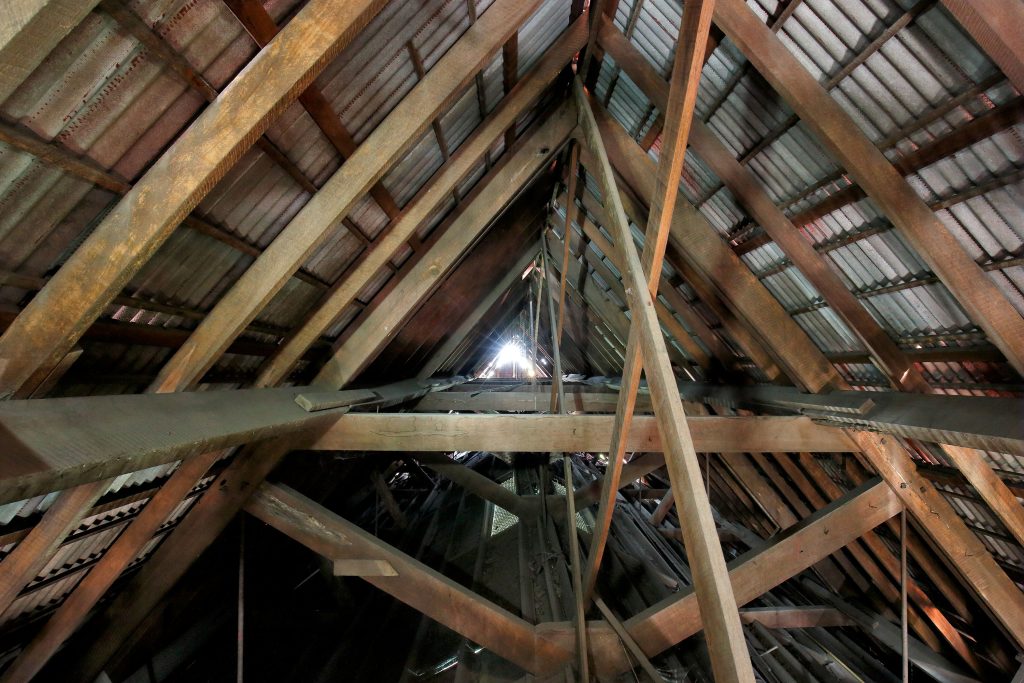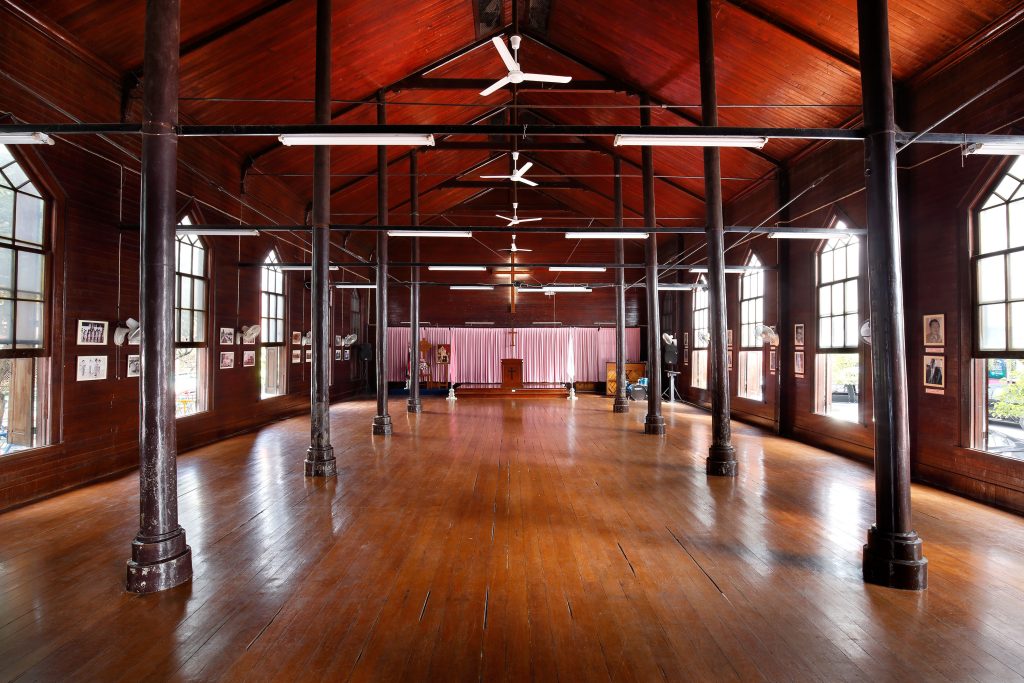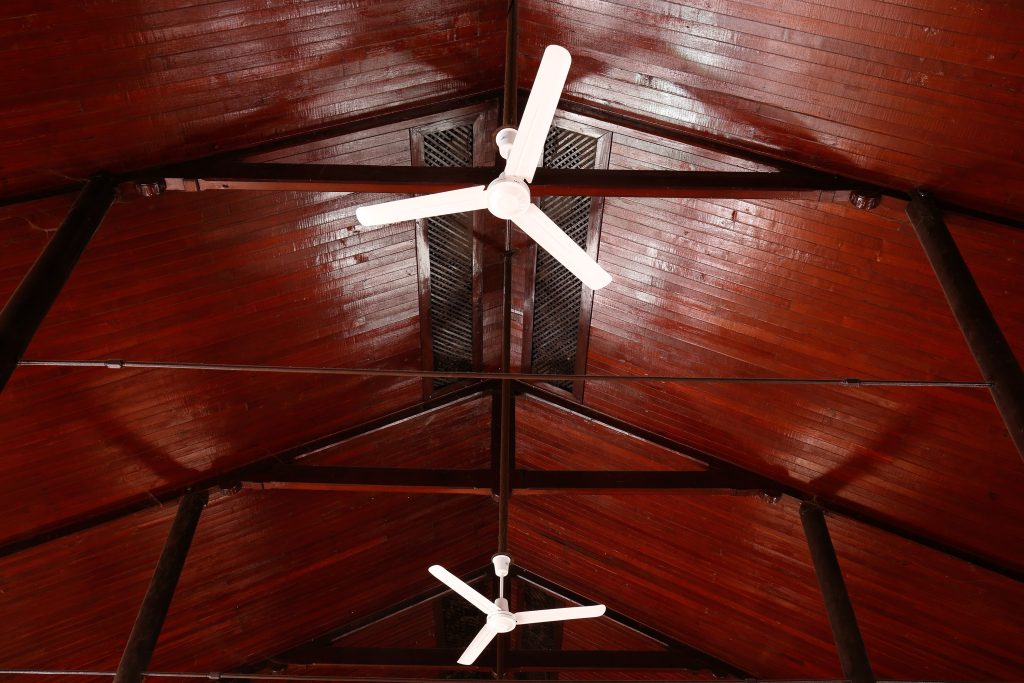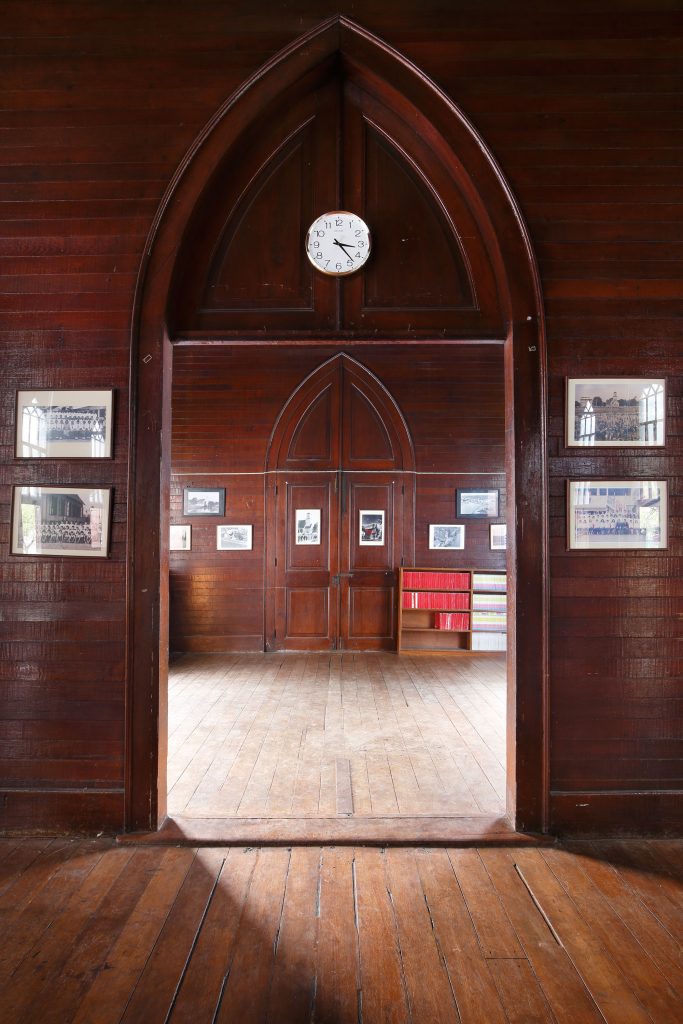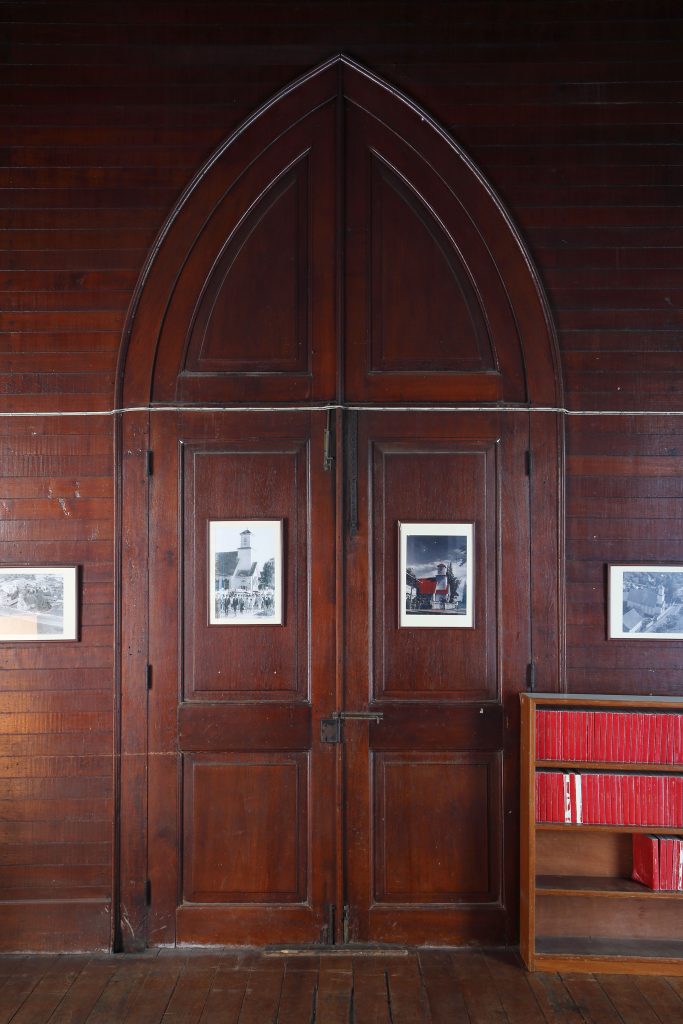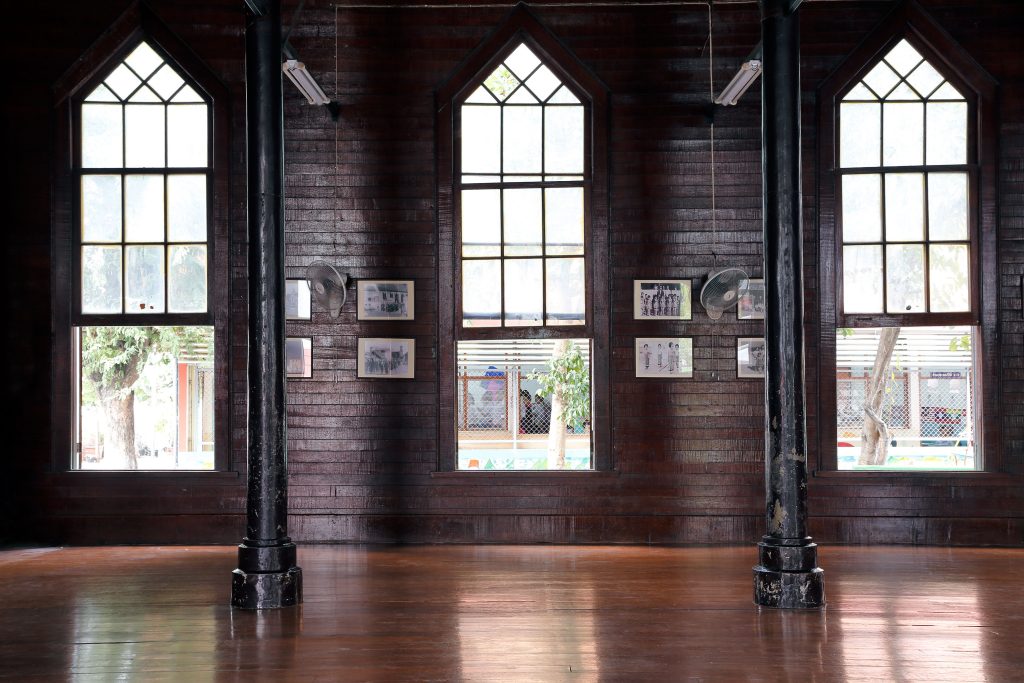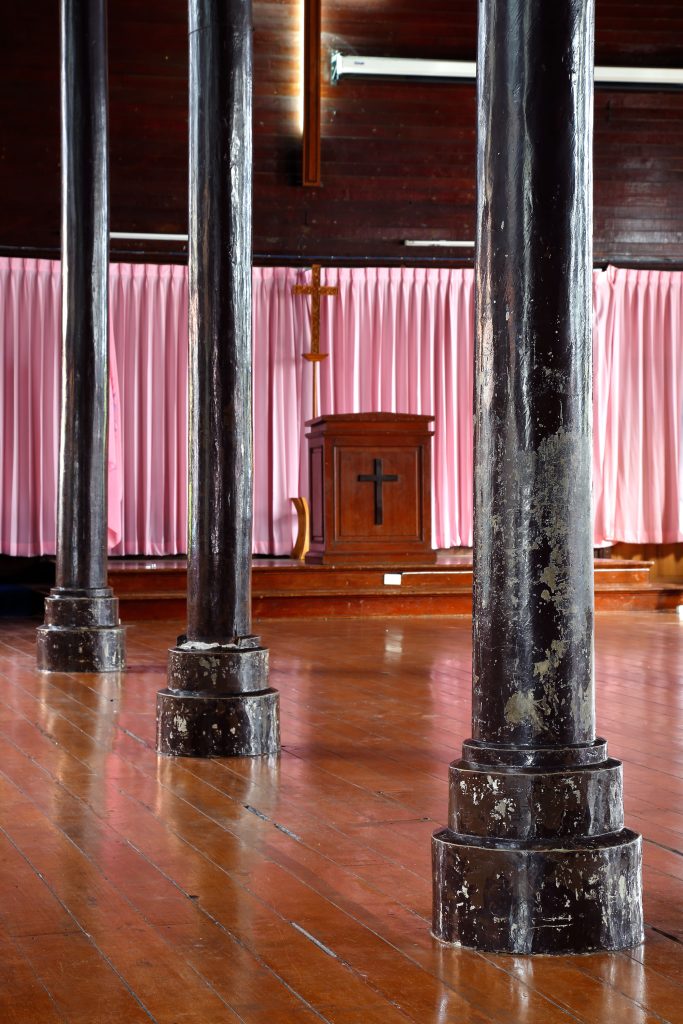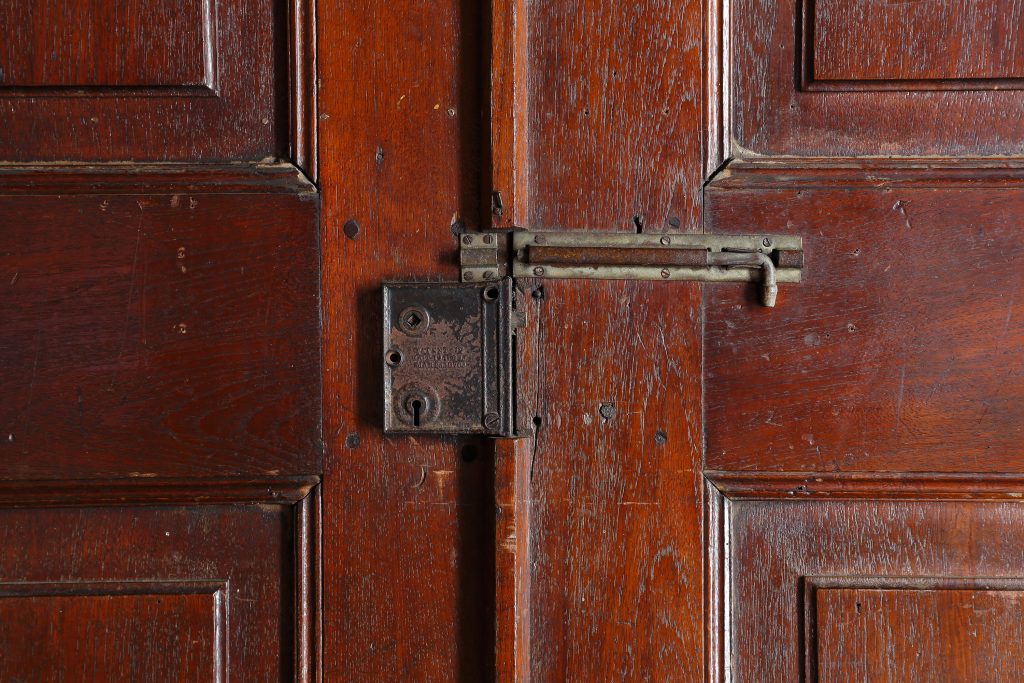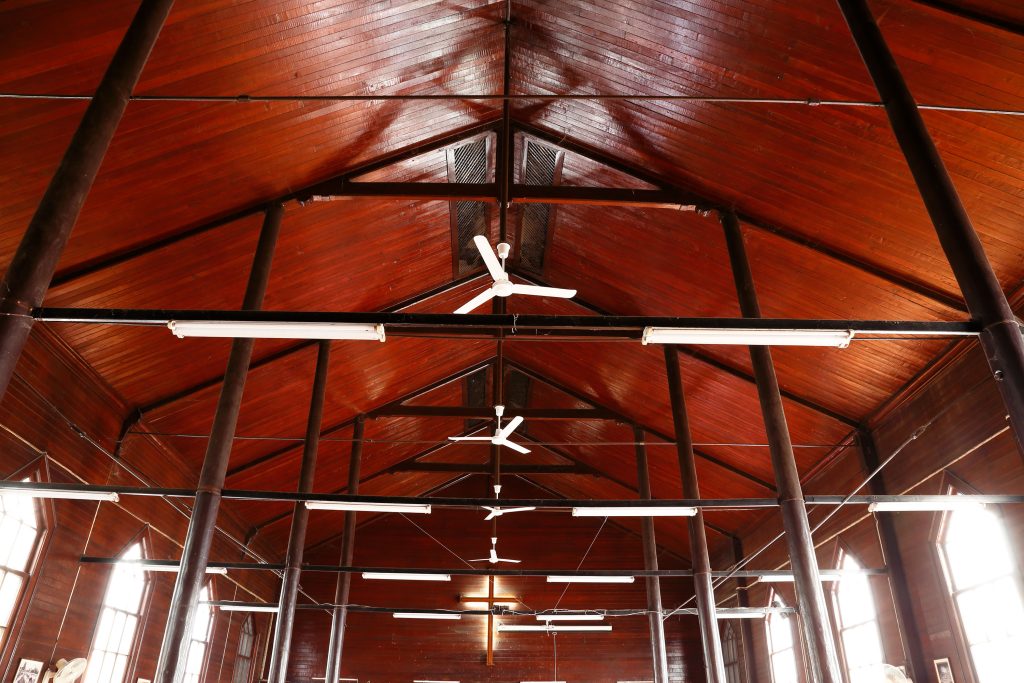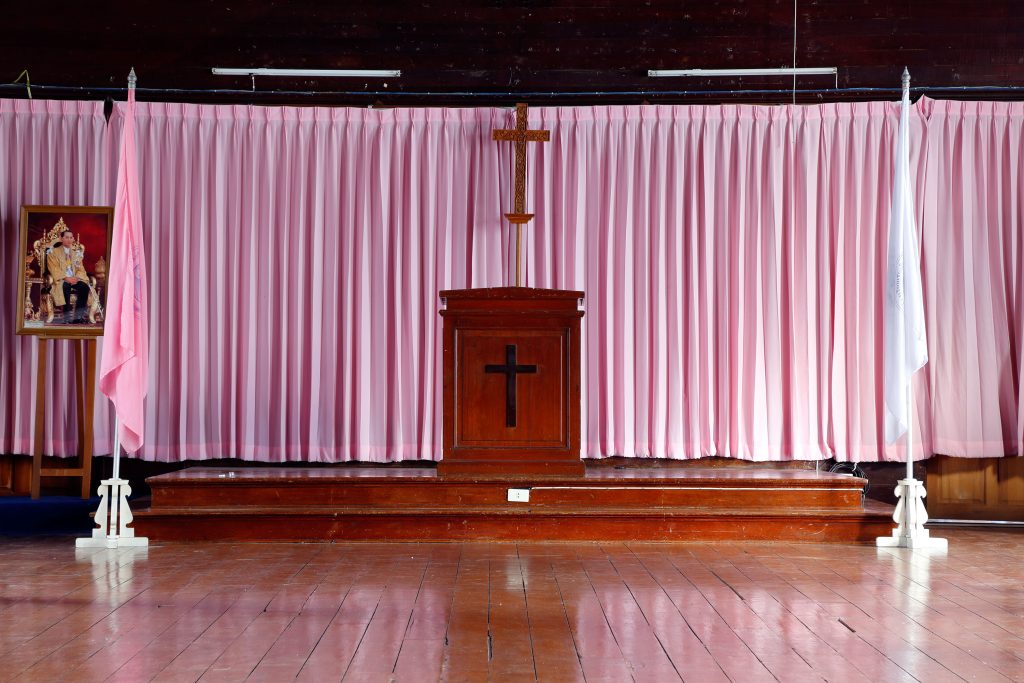พุทธาวาส วัดบรมนิวาสราชวรวิหาร
อ่านเพิ่มเติม
พุทธาวาส วัดบรมนิวาสราชวรวิหาร
- ที่ตั้ง เลขที่ 2 ถนนพระราม 1 แขวงรองเมือง เขตปทุมวัน กรุงเทพมหานคร
- สถาปนิก/ผู้ออกแบบ ไม่ปรากฏนาม
- ผู้ครอบครอง วัดบรมนิวาสราชวรวิหาร
- ปีที่สร้าง สมัยรัชกาลที่ 4
ประวัติ
แต่เดิม วัดบรมนิวาส มีนามว่า วัดบรมสุข ไม่ปรากฏหลักฐานการสร้าง มีเพียงตำนานเล่าขานสืบมาว่าผู้แรกสร้าง พระอารามถึงแก่กรรมในสงครามเขมร ทายาทจึงน้อมเกล้าฯ ถวายไว้ในพระบรมราชูปถัมภ์ของพระบาทสมเด็จพระจอมเกล้าเจ้าอยู่หัวเมื่อครั้งยังทรงผนวชและประทับจำพรรษาที่วัดบวรนิเวศวิหารจึงโปรดเกล้าฯ ให้สร้างเสนาสนะเพิ่มเติมขึ้นภายในวัด เมื่อแรกสถาปนานั้น มีการเรียกนามวัดบรมนิวาสอย่างสามัญว่า “วัดนอก” เนื่องจากตั้งอยู่นอกกำแพงพระนคร อันเป็นพื้นที่ห่างไกลเปี่ยมไปด้วยความเงียบสงัดเป็นที่พอพระราชหฤทัยของพระบาทสมเด็จพระจอมเกล้าเจ้าอยู่หัว จึงมีพระราชประสงค์ที่จะสถาปนาเป็นพระอารามธรรมยุติกนิกายฝ่าย อรัญวาสี ที่มุ่งเน้นการปฏิบัติ วิปัสสนาธุระ คู่กับวัดบวรนิเวศวิหารซึ่งทรงสถาปนาเป็นพระอารามธรรมยุติกนิกายฝ่ายคามวาสี ที่เน้นการศึกษา คันถธุระ เลยเรียกวัดบวรนิเวศวิหารอย่างสามัญชนว่า “วัดใน”เนื่องจากตั้งอยู่ในกำแพงพระนคร จนเมื่อพระบาทสมเด็จพระจุลจอมเกล้าเจ้าอยู่หัวโปรดเกล้าฯ ให้มีการบูรณปฏิสังขรณ์ครั้งใหญ่ และพระราชทานนามใหม่ว่า วัดบรมนิวาส
หลังจากนั้นได้มีการบูรณปฏิสังขรณ์เสนาสนะ ตลอดจนถาวรวัตถุต่างๆ ของวัดบรมนิวาสเรื่อยมา โดยในพุทธศักราช 2552 วัดบรมนิวาส กรมศิลปากร สำนักงานทรัพย์สินส่วนพระมหากษัตริย์ และพุทธศาสนิกชนได้ร่วมกันจัดทำโครงการบูรณปฏิสังขรณ์วัดบรมนิวาส โดยบูรณปฏิสังขรณ์เสนาสนะภายในเขตพุทธาวาสประกอบด้วย การปฏิสังขรณ์พระอุโบสถ ซ่อมอนุรักษ์ภาพจิตรกรรมฝาผนังภายในพระอุโบสถในส่วนภาพปริศนาธรรมฝีมือขรัวอินโข่ง ซ่อมอนุรักษ์พระทศพลญาณและฐานชุกชีภายในพระอุโบสถ ศาลาข้างพระอุโบสถกำแพงแก้ว พระเจดีย์ ศาลาทางเข้าเขตพุทธาวาส ตลอดจนฉัตร 7 ชั้น ที่กางกั้นเหนือพระทศพลญาณ รวมทั้งอนุรักษ์ระเบียงคด หอกลอง หอระฆัง ตุ๊กตาแปดเซียนซึ่งเป็นรูปสลักศิลาตั้งอยู่ด้านหน้าและด้านหลังพระอุโบสถและโพธิมัลลกะ
สำหรับการบูรณปฏิสังขรณ์นั้น ได้ดำเนินการตามหลักวิชาการอย่างเคร่งครัด มุ่งเน้นการฟื้นฟูรักษาสภาพดั้งเดิมเหมือนเมื่อครั้งแรกสร้าง และการบูรณะปรับปรุงส่วนต่างๆ ที่ชำรุดทรุดโทรมให้กลับคืนสู่สภาพความมั่นคง โดยอาศัยองค์ความรู้ ทางวิชาการประกอบกับข้อมูลหลักฐานที่เป็นเอกสารหรือภาพถ่าย เพื่อให้เกิดความสมบูรณ์ถูกต้องผสมผสานกับแนวทางการพัฒนาที่สอดคล้องกับสภาวการณ์ปัจจุบัน เพื่อให้บรรดาอาคารสถานภายในพระอารามหลวงแห่งนี้มีความแข็งแรง งดงาม และดำรงเอกลักษณ์ทางศิลปะ ตลอดจนสามารถบูรณาการให้เป็นอเนกประโยชน์แก่พระภิกษุ พุทธบริษัท และประชาชนโดยทั่วกัน
Buddhavas, Wat Borommanivas
- Location: 2 Rama 1 Road, Rong Muang District, Bangkok
- Architect/ Designer Unknown
- Owner: Wat Borommanivas
- Year built: During the reign of King Rama IV
History
Wat Borommanivas was originally named Wat Borommasuk. There was no evidence as to when the temple was built. Legend has it that the original builder of the temple was killed in the Cambodian War, the heirs then offered to place it under the Royal Patronage of His Majesty King Rama IV during his monkhood, residing in Wat Bowornnivet. He ordered the construction of more living quarters for the monk in the temple. When the temple was first established, it was commonly called “Wat Nok” for it was located in a remote area outside the city wall. Due to its tranquility which pleased the King, the temple was appointed to serve as an Aranyawasi of Dhammayut Nikaya which focus on the practice of meditation and appointed Wat Bowornnivet to serve as a Khammawasi that emphasizes the study of Buddhist scriptures and was, therefore, commonly referred to as “Wat Nai” for it was located within the city wall. The temple has undergone a major restoration under the order of King Rama V and was renamed Wat Borommanivas.
There has been an ongoing renovation of Wat Borommanivas’ living quarters and other permanent structures and in 2009, Wat Borommanivas, the Fine Arts Department, the Bureau of the Crown Property and the Buddhist laymen initiated a joint project to renovate Wat Borommanivas. The renovation project included the restoration of the Ubosot, and the mural paintings inside created by Khrua Inkrong, the repair of Pra Thotsaphonlayan and its base, the pavilion on the side of the chapel and its surrounding wall, the royal pagoda, the entry pavilion as well the seven tiered umbrella on top of Pra Thotsaphonlayan. The renovation work also covered the peristyle, the bell tower, the stone carving statue of the eight immortals in the front and back of the chapel and the platform built around the Bodhi tree.
The renovation projects strictly adhered to the technical guidelines and focused on restoring the temple according to its original condition when it was first built. The repairs of the damaged parts to ensure its structural stability were based on a technical knowledge and information from related documents or photographs for complete and accurate results. An integrated development plan with application to the current situation ensured the buildings within this royal temple regain its stability and beauty, maintain its artistic characteristic and benefit the monks, fellow Buddhists and general public.
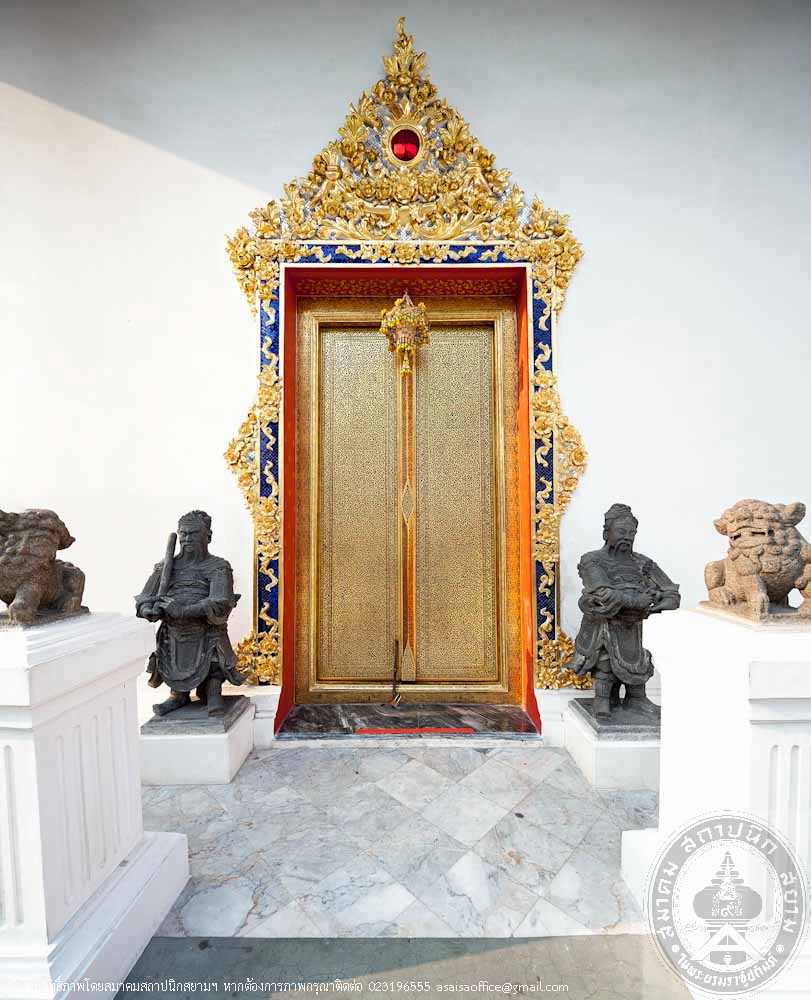
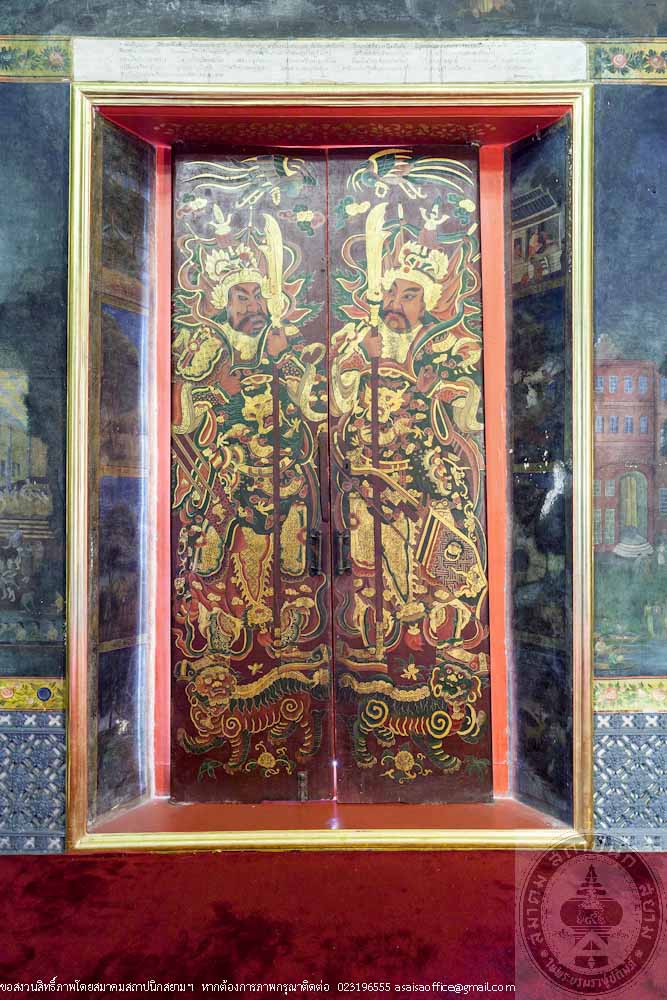
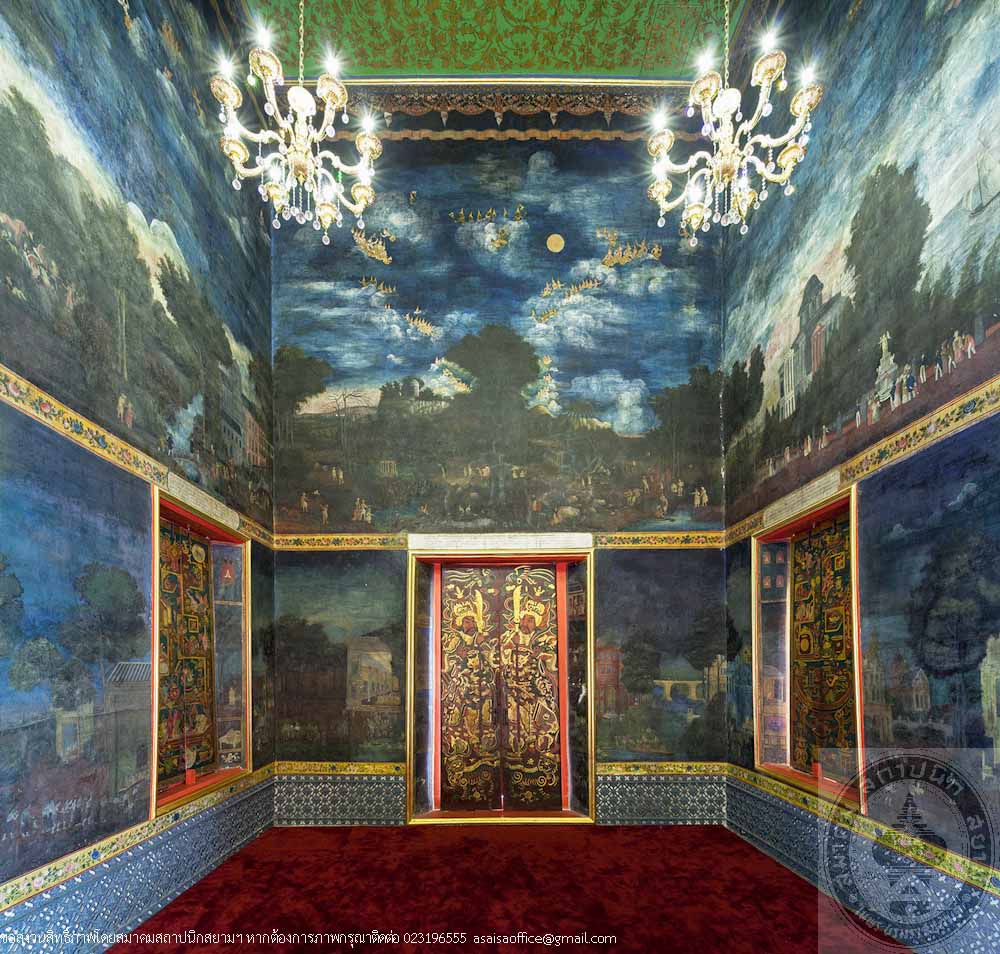
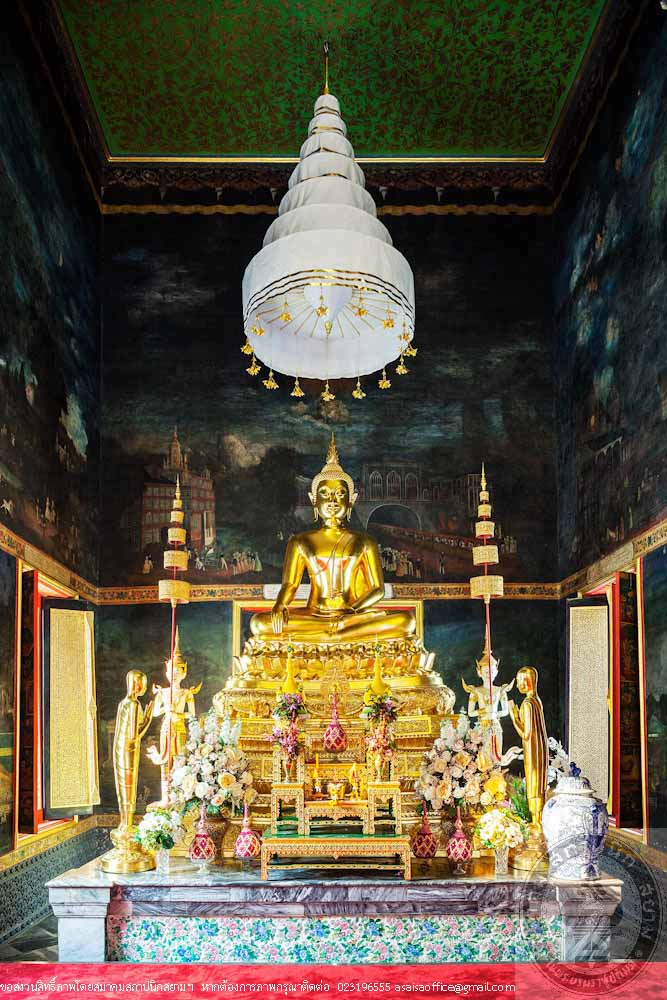
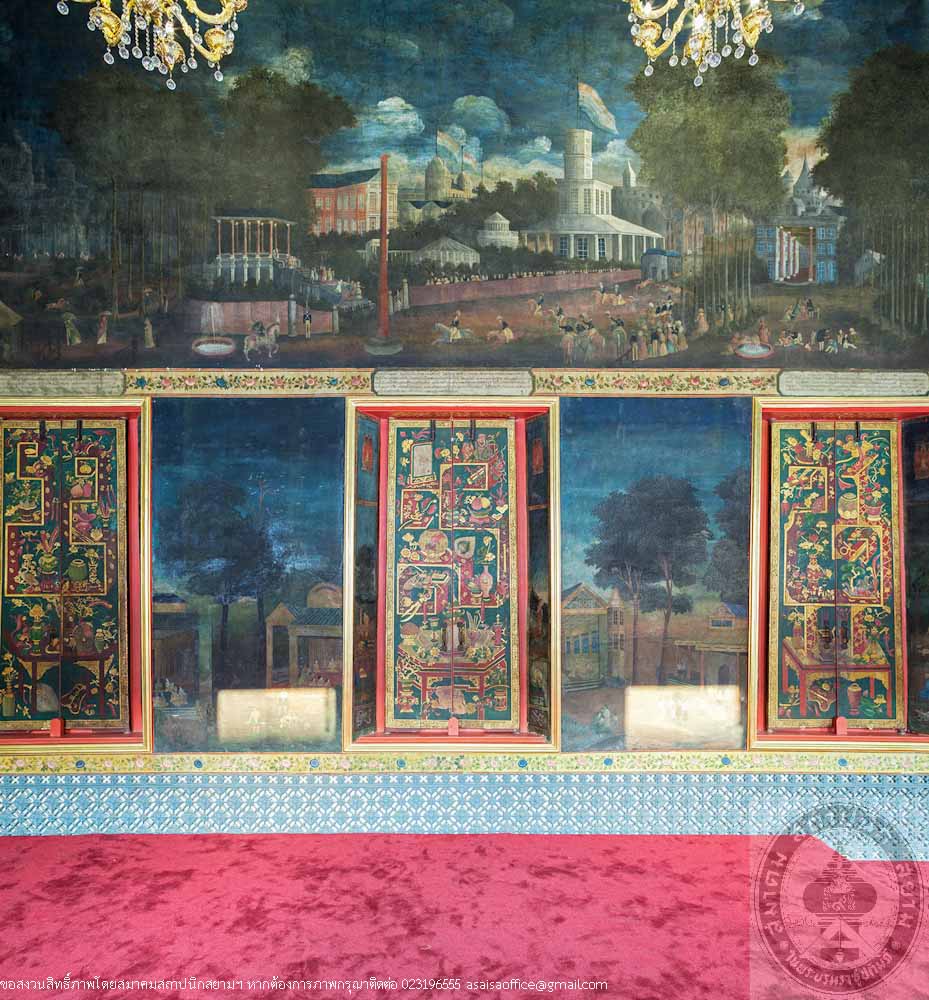
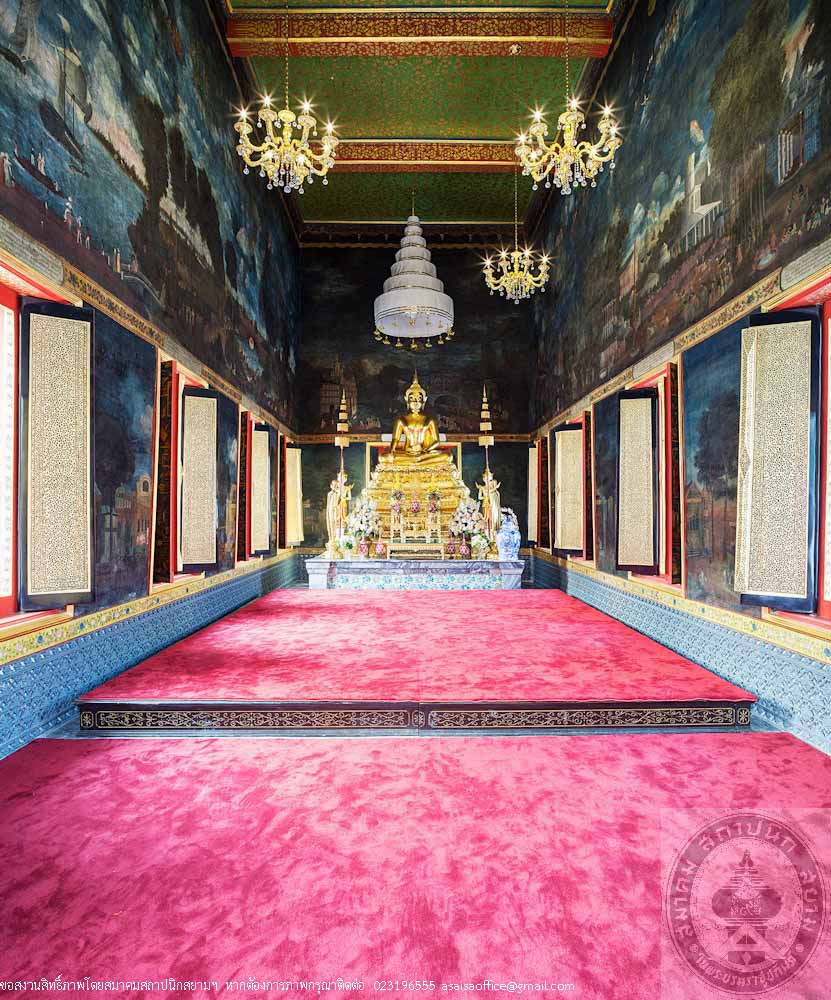
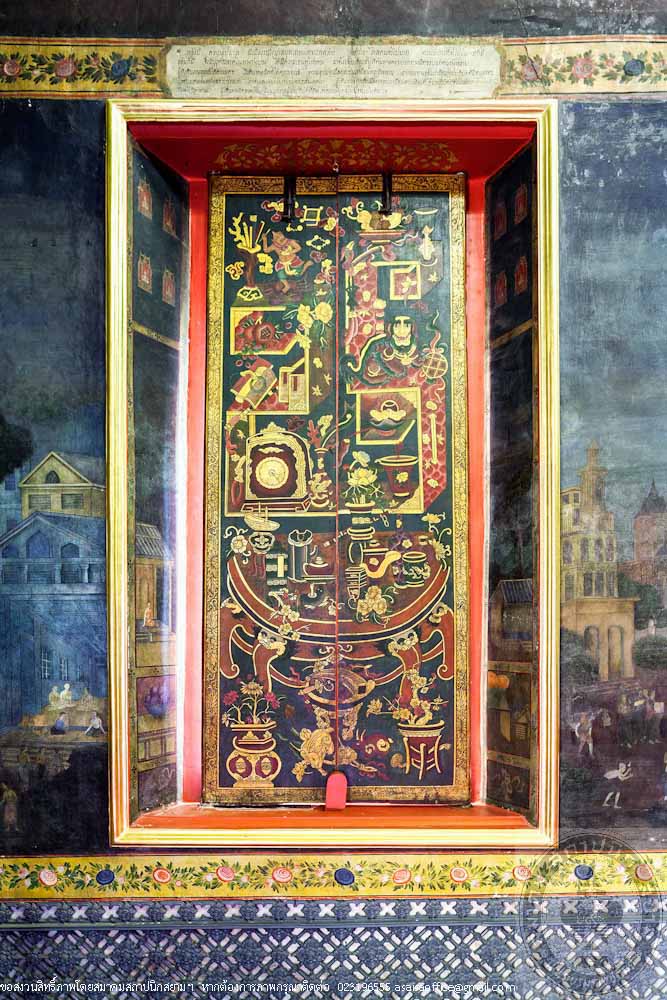
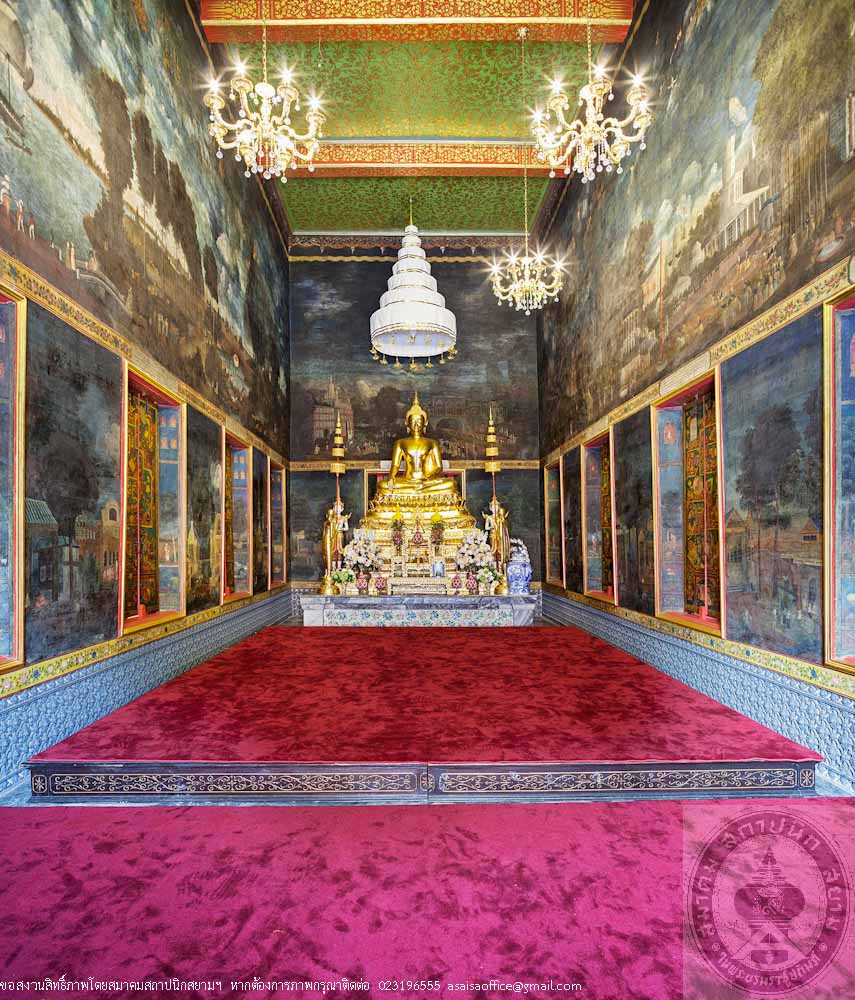
บ้านพักบุญราศี นิโคลัส บุญเกิด กฤษบำรุง
อ่านเพิ่มเติม
บ้านพักบุญราศี นิโคลัส บุญเกิด กฤษบำรุง
- ที่ตั้ง วัดนักบุญเทเรซา บ้านโนนแก้ว หมู่ 4 ตำบลตะโก อำเภอห้วยแถลง จังหวัดนครราชสีมา
- สถาปนิก/ผู้ออกแบบ ไม่ปรากฏนาม ก่อสร้างโดยช่างไม้ที่มีฝีมือในชุมชน คือ นายประกอบ ชัยชนะ นายบุญถึง ศรีสุระ และนายชาลี ศรีสุระ
- ผู้ครอบครอง วัดนักบุญเทเรซา บ้านโนนแก้ว
- ปีที่สร้าง พุทธศักราช 2481
ประวัติ
เมื่อพุทธศักราช 2474 คริสตศาสนิกชนกลุ่มแรกได้เดินทางมาตั้งชุมชน “บ้านโนนแก้ว” หนึ่งปีต่อมาได้มีการก่อสร้างวัดนักบุญเทเรซา โดยมีคุณพ่อราฟาแอล บุญมี รักสงบเป็นผู้รักษาการวัดโนนแก้ว และคอยอภิบาลดูแล จนถึงพุทธศักราช2481 คุณพ่อนิโคลาส บุญเกิด กฤษบำรุง ได้รับการแต่งตั้งเป็นเจ้าอาวาสวัดโนนแก้ว ท่านเป็นพระสงฆ์ที่มีใจร้อนรนต่อการประกาศพระวรสาร มีใจเสียสละเอาใจใส่งานอภิบาลเป็นอย่างดีโดยเฉพาะทางด้านวิญญาณและด้านร่างกาย ท่านได้ช่วยเหลือคนในชุมชนบ้านโนนแก้วในเรื่องการประกอบอาชีพเกษตรกรรม โดยเฉพาะคนยากจนที่ด้อยโอกาส โดยไม่เลือกศาสนา ท่านเป็นพระสงฆ์ที่มีพรสวรรค์ในการเทศน์ ผู้ที่ได้รับฟังบทเทศน์ของท่านต่างรู้สึกเลื่อมใสเกิดความประทับใจเป็นอย่างมาก ในเวลาดังกล่าว คุณพ่อ ได้พักอาศัยที่บ้านพักหลังนี้ ขณะเดียวกันกรณีขัดแย้งระหว่างไทยและฝรั่งเศสเกี่ยวกับการถือครองสิทธิเหนือมณฑลพระตะบอง เสียมราฐ ไพลินและศรีโสภณ ในกัมพูชา ได้ทวีความรุนแรงเมื่อรัฐบาลไทยออกคำสั่งให้คนเชื้อชาติฝรั่งเศสออกจากราชอาณาจักรไทยในทันที รวมถึงคุณพ่อที่เป็นชาวฝรั่งเศส และในวันที่ 12 มกราคมพุทธศักราช2484 คุณพ่อนิโคลาส บุญเกิด กฤษบำรุง เจ้าอาวาสวัดโนนแก้ว ได้เดินทางไปบ้านหันและถูกจับที่อำเภอสีคิ้ว จังหวัดนครราชสีมา พร้อมกับครอบครัวคริสตศาสนิกชน จำนวน 9 คน ในข้อหากบฏภายนอกราชอาณาจักรทั้งที่ไม่เป็นความจริง ต่อมาคุณพ่อเสียชีวิตในเรือนจำด้วยโรควัณโรค แม้ขณะอยู่ในเรือนจำท่านได้สอนคำสอนและช่วยดูแลนักโทษที่ป่วย ได้โปรดศีลล้างบาปให้แก่นักโทษ โดยเฉพาะคนใกล้จะเสียชีวิตจำนวน 68 คน จากเหตุการณ์ดังกล่าวเป็นเรื่องที่ยืนยันในความเชื่อความศรัทธาที่มั่นคงต่อคริสต์ศาสนา กอปรกับท่าน มีชีวิตที่มีคุณธรรม มีผลบุญโดยประกอบกิจดีงามเป็นที่ประจักษ์ ทำให้ศาสนาจักรได้เสนอให้ท่านเป็นผู้สมควรได้รับการแต่งตั้งเป็นบุญราศีต่อสันตะสำนัก โดยคุณพ่อนิโคลาส บุญเกิด กฤษบำรุง ได้รับการแต่งตั้งเป็นบุญราศีเมื่อวันอาทิตย์ที่ 5 มีนาคม พุทธศักราช 2543 ณ มหาวิหารนักบุญเปโตร กรุงโรม สำนักวาติกันบ้านพักหลังนี้นอกจากเป็นที่พักอาศัยของบุญราศี นิโคลัส บุญเกิด กฤษบำรุง และคุณพ่อประจำวัดหลายต่อหลายท่านแล้ว ยังคงมีเรื่องราวทางประวัติศาสตร์ของชุมชนเกี่ยวกับการเบียดบังทางศาสนา โดยมีร่องรอยกระสุนปืนที่ยิงใส่บ้านพักในช่วงเหตุการณ์ความขัดแย้งด้านความเชื่อปรากฏให้เห็นอย่างชัดเจน
บ้านพักอาศัยของบุญราศี นิโคลัส บุญเกิด กฤษบำรุง ตั้งอยู่ด้านหลังอาคารวัดเทราซา บ้านโนนแก้ว เป็นบ้านไม้สองชั้น ใต้ถุนโล่ง ขนาดของอาคารกว้างประมาณ 10 เมตร ยาวประมาณ 15 เมตร ยกสูงกว่าระดับดิน 2.60 เมตร จำนวนเสา 49 ต้น โครงสร้างทั้งหมดเป็นไม้เต็ง หลังคาทรงปั้นหยามีมุขหน้าหลังคาทรงจั่ว มุงด้วยแผ่นกระเบื้องซีเมนต์ใยหิน โดยพื้นที่ใช้สอยชั้นบนเมื่อขึ้นจากบันไดจะเป็นโถงกลางแล้วแบ่งห้องพักสองฝั่งๆ ละ 2 ห้อง เป็นห้องพักคุณพ่อ จำนวน 3 ห้อง และห้องพักสำหรับเด็กวัดจำนวน 1 ห้อง มีระเบียงยาวสำหรับเดินสวดภาวนา และเชื่อมไปยังห้องน้ำที่อยู่ด้านข้าง
ตลอดระยะเวลาที่ผ่านมา บ้านพักบุญราศี นิโคลัส บุญเกิด กฤษบำรุง ได้รับการทำนุบำรุงให้อยู่ในสภาพที่ดีอยู่เสมอ สามารถรักษาคุณค่าทางด้านประวัติศาสตร์ ด้านจิตใจ ด้านศิลปกรรม และสถาปัตยกรรมที่แสดงถึงภูมิปัญญาของบรรพบุรุษด้านการออกแบบก่อสร้างและการพึ่งพาตนเอง ด้านที่อยู่อาศัย ปัจจุบันอาคารใช้เป็นพิพิธภัณฑ์จัดแสดงสภาพบ้านพักและสิ่งของของบุญราศีเหมือนครั้งเมื่อท่านมีชีวิตอยู่ บ้านพักแห่งนี้จึงเป็นเสมือนประจักษ์พยานทางความเชื่อที่มีต่อคริสต์ศาสนาของชุมชนบ้านโนนแก้วหลายชั่วอายุคน
Blessed Nicholas Bunkerd Kitbamrung’s Residence
- Location: Saint Teresa Church, Baan Noankaew Moo 4, Tambon Tako, Huai Thalaeng District, Nakhon Ratchasima
- Architect/Designer: Unknown. Constructed by skilled carpenters in the community; Prakob Chaichana, Buntueng Srisura and Chalee Srisura
- Owner: Saint Teresa Church, Baan Noankaew
- Year Built: 1938
History
In 1931, a group of Christians established a community named “Baan Noan Kaew.” A year later, Saint Teresa Church was established. Reverend Raphael Bunmee Raksangob was in charge of managing and taking care of the church until the year 1938, when he was appointed Abbot of Noan Kaew Church. He was very eager to spread the gospel, dedicated and took great care of his work both spiritually and physically. He supported agricultural workers of Baan Noan Kaew, especially the poor who lack sufficient opportunity no matter what religions they are in. agriculture especially the poor that lacked opportunity. He was also a talented preacher; his preaching impressed and was admired by many who attended his sermon. At the time he was residing at this place, the conflict between Thai and France over Pratabong, Siem Reap and Sri Sophon of Cambodia progressed when the Thailand Government ordered all French citizens to leave the Kingdom immediately including the Reverend Father. On January 12, 1941, Reverend Nicholas Bunkerd Kritbamrung, the Abbot of Noan Kaew Church traveled to Baan Han and was arrested in See-Kew District of Nakorn Ratchasima together with other 9 other Christians and were wrongly accused of treason. Even when he was imprisoned, he still preached the Gospel and helped taking care of the ill inmates. He also administered Baptism to prisoners especially the terminally ill and baptized at least 68 of his fellow inmates. This event confirmed his strong faith in Christianity. He lived a virtuous life and as a consequence of his good conduct, Thailand Christian Church nominated him for sainthood to the Vatican. The beatification of Reverend Nicholas Bunkerd Kitbamrung took place on Sunday, March 5th, 2000 at Saint Peter Basilica in Rome. Not only was it a residence of Blessed Nicholas Bunkerd Kitbamrung and many other monastery heads, this house is also full of history of religious discrimination against the people in the community. There are still apparent traces of bullet holes fired at the house during the religious conflict.
Blessed Nicholas Bunkerd Kitbamrung’s residence located at the back of Saint Teresa Church of Baan Noan Kaew, is a two storey wooded structure with an open space under the house. The house measured 10 meters wide and 15 meters deep and was raised 2.60 meter above ground. There are 49 pillars and was entirely built of Siamese sal wood. This hipped roof house has a gable roof porch with asbestos cement roof tiles. The staircase leading up to the second floor opens up to a large foyer with two bedrooms on each side, three of which were for the priests and one for the church attendant. A long balcony for walking meditation has access to the bathroom on the side of the house.
Throughout the Years, Blessed Nicholas Bunkerd Kitbamrung’s residence has been well maintained enabling the community to preserve its historical, spiritual and cultural values as well as the architecture of the house that reveals their ancestors’ wisdom in the design and construction as well as their self reliant homesteading. Now a museum, the house displays the actual living condition and personal belongings of Blessed Nicholas Bunkerd Kitbamrung the way it was when he was there. This residence is, therefore, an evidence of Christian faith of Baan Noan Kaew’s generations after generations.
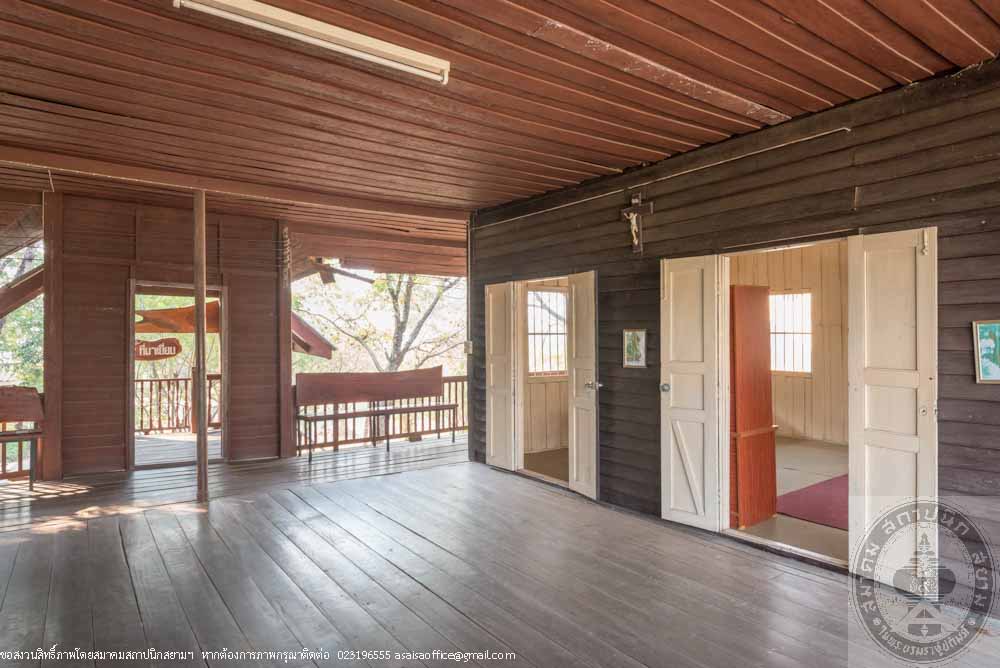
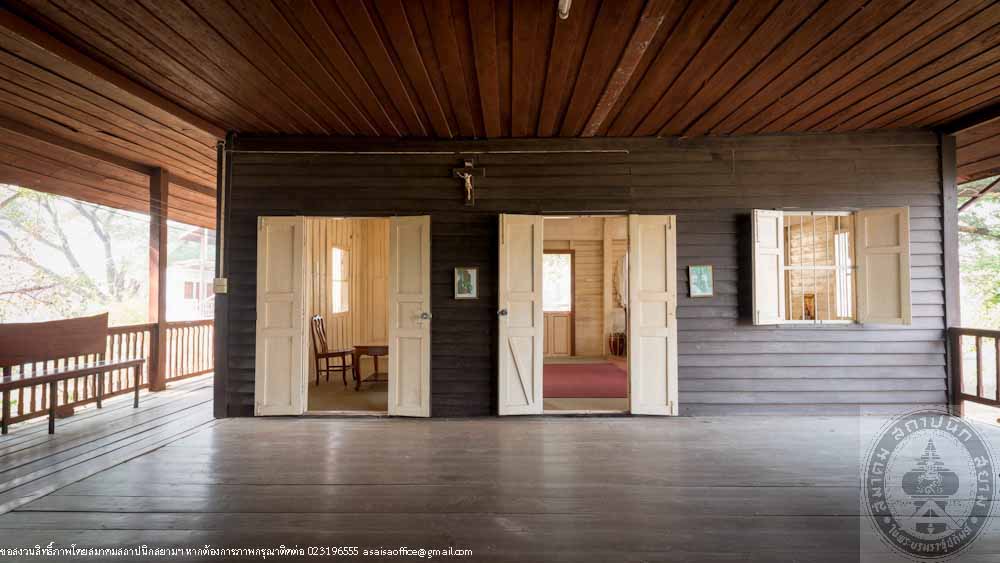
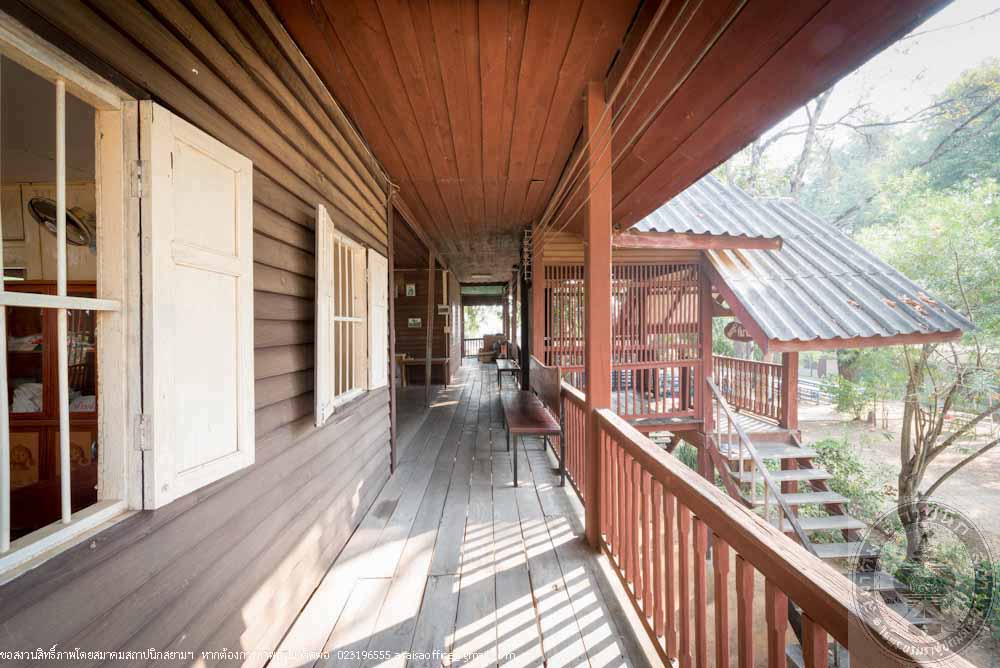
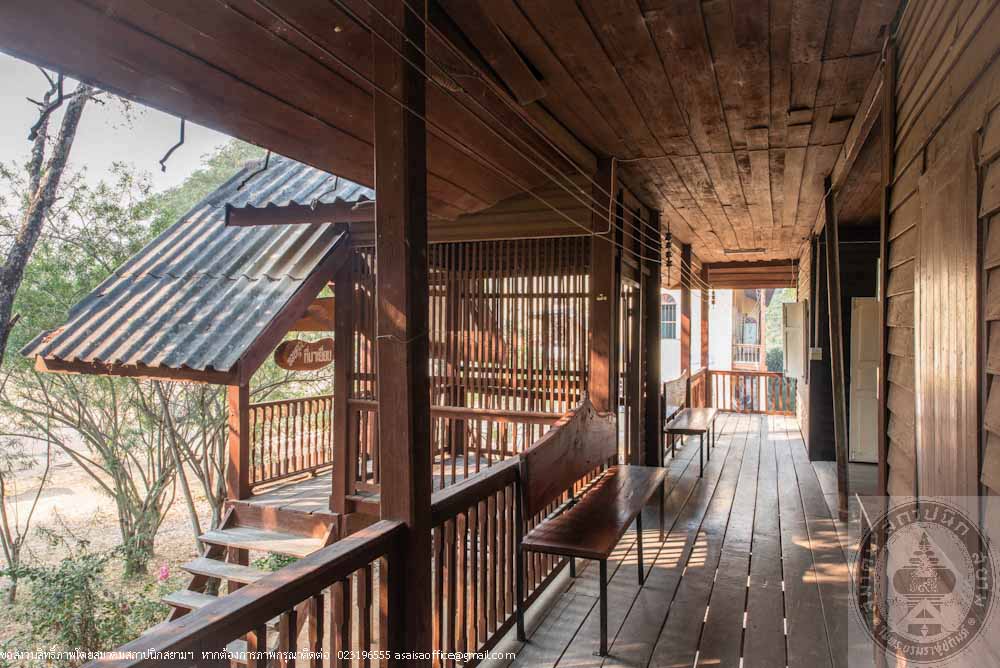
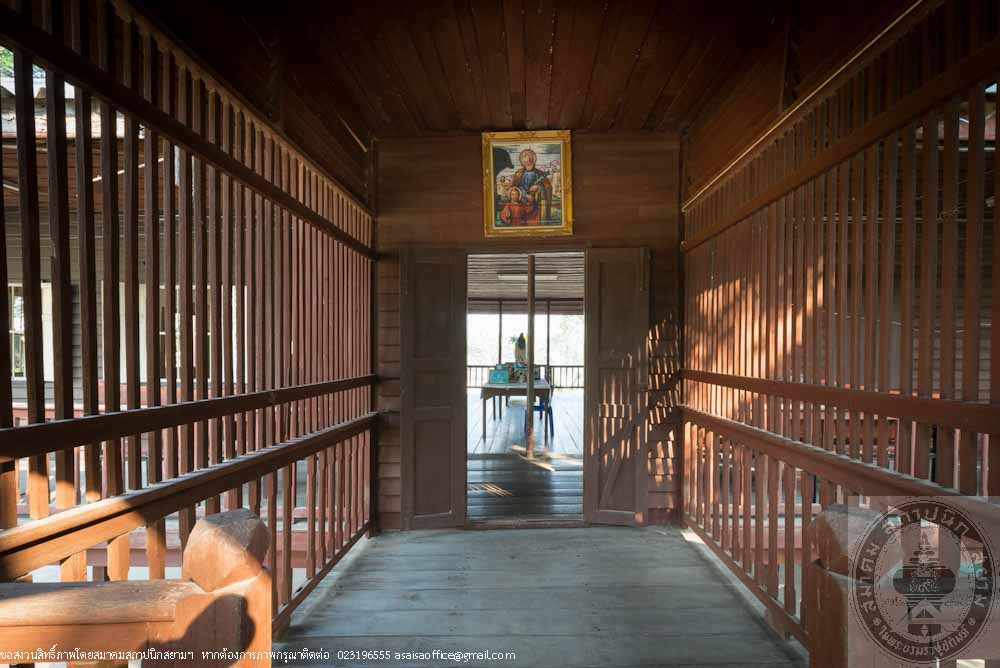
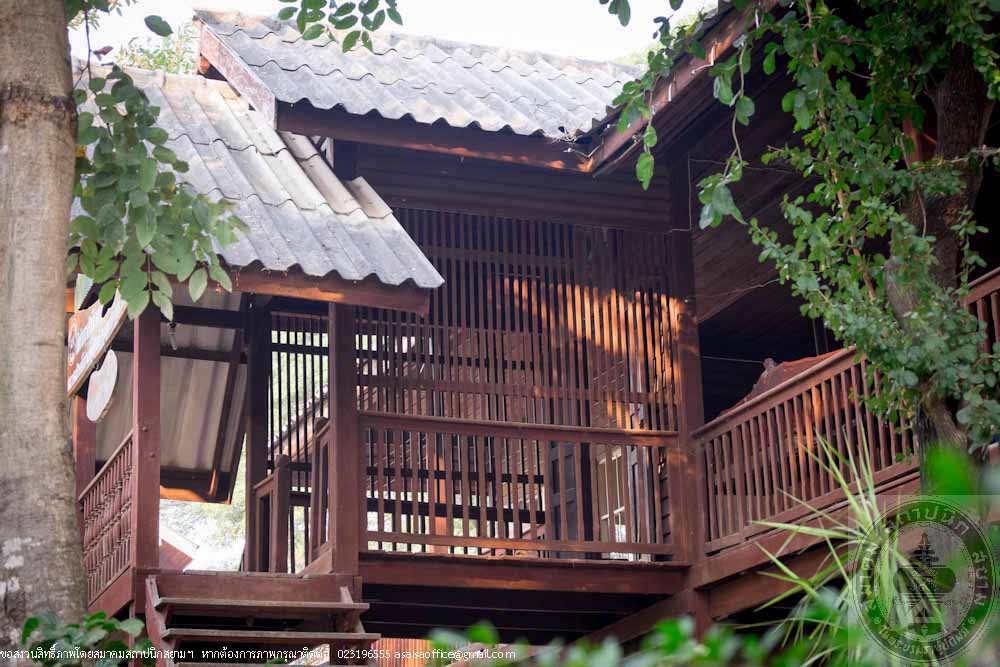
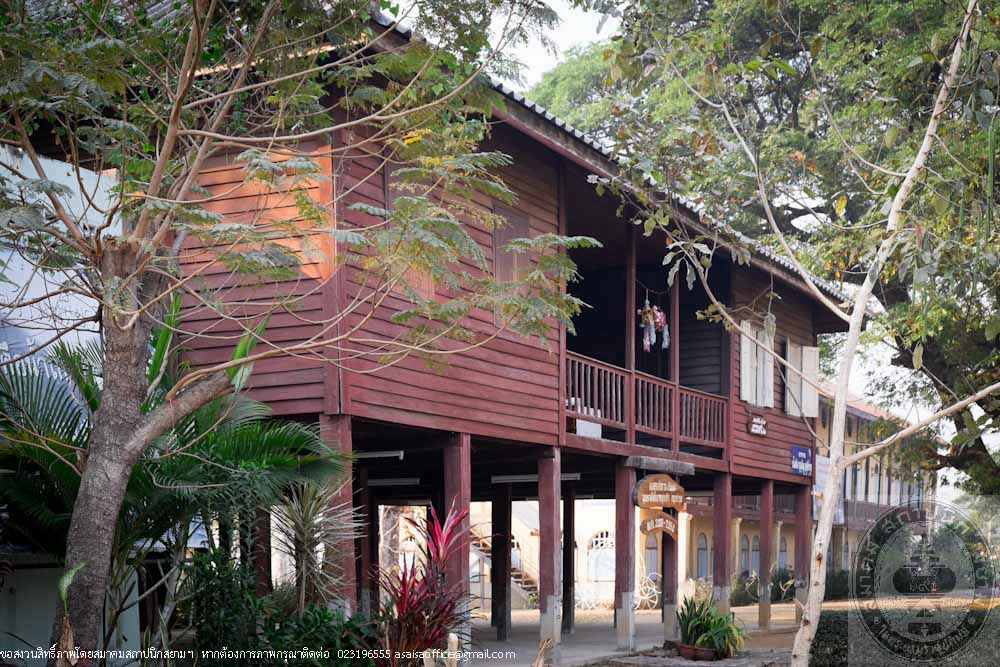
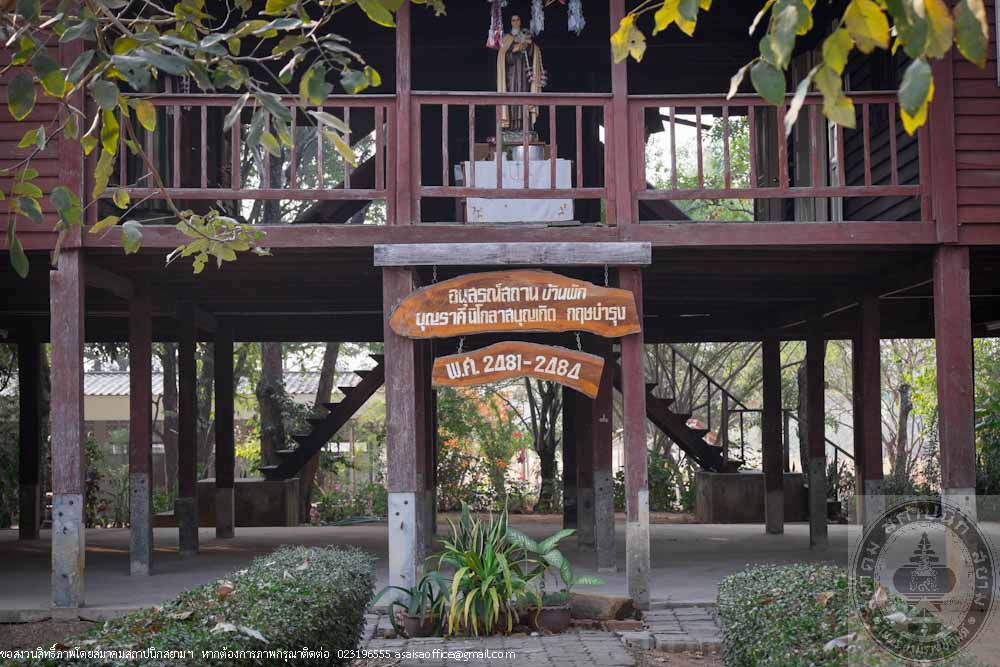
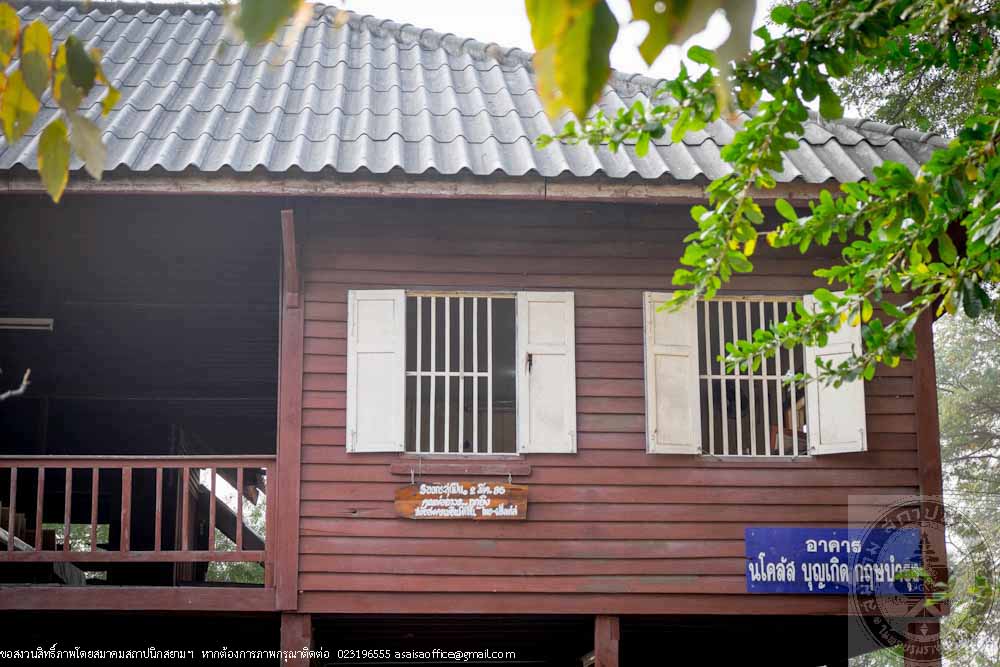
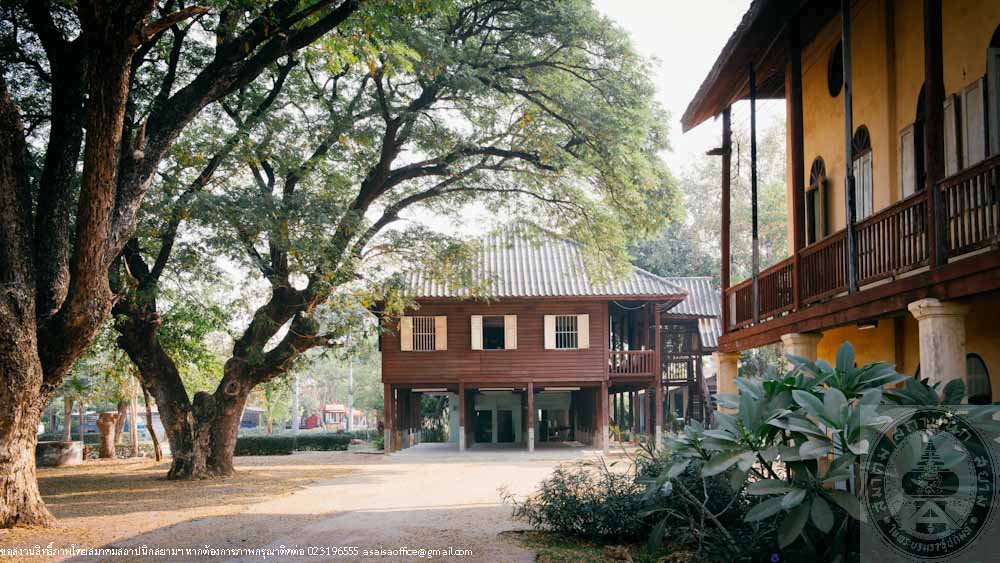
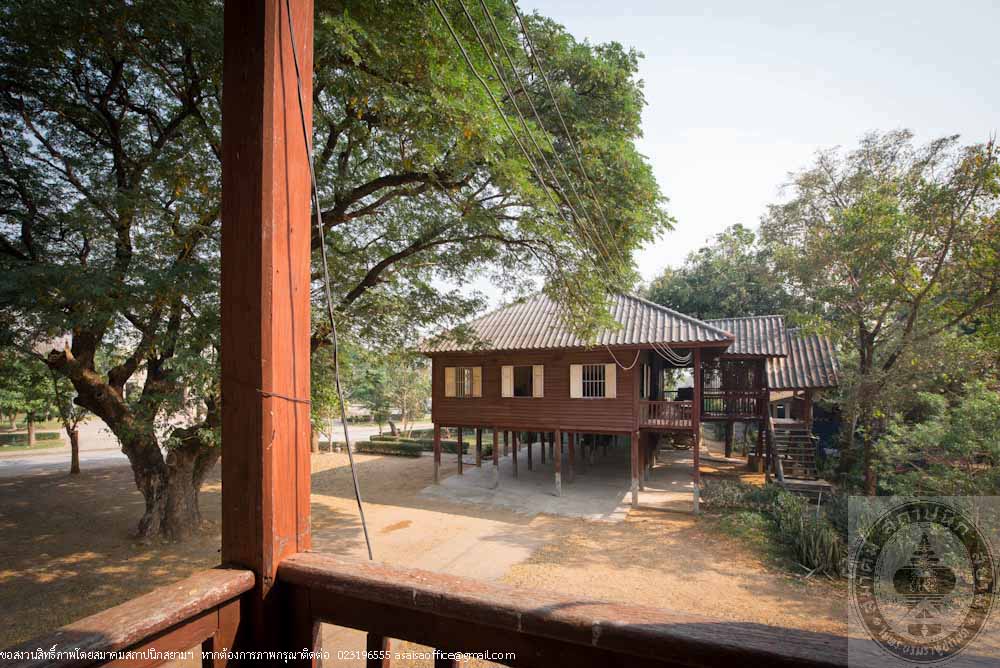
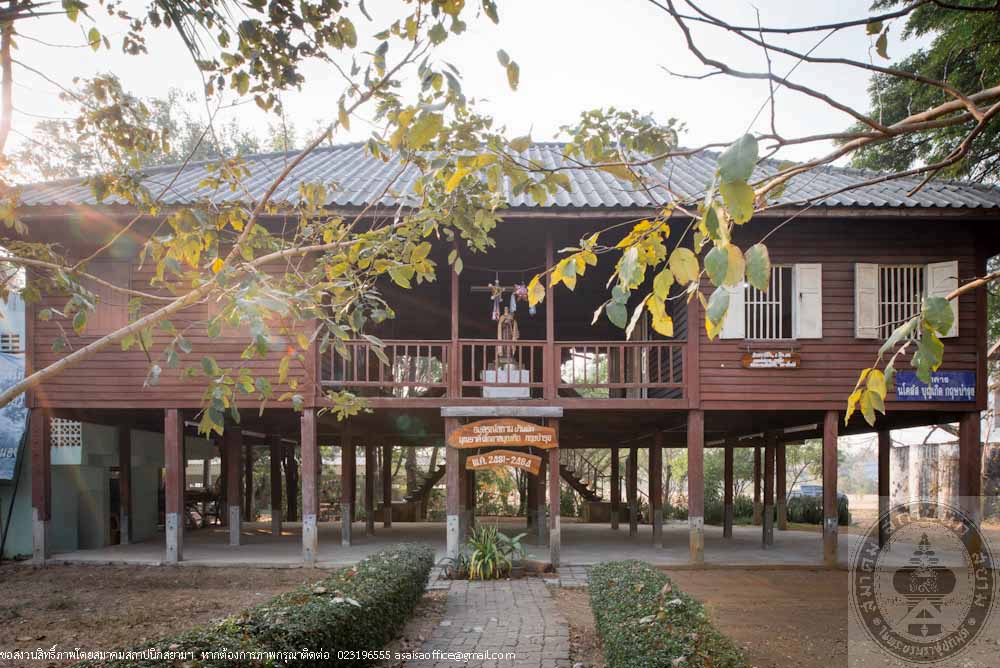
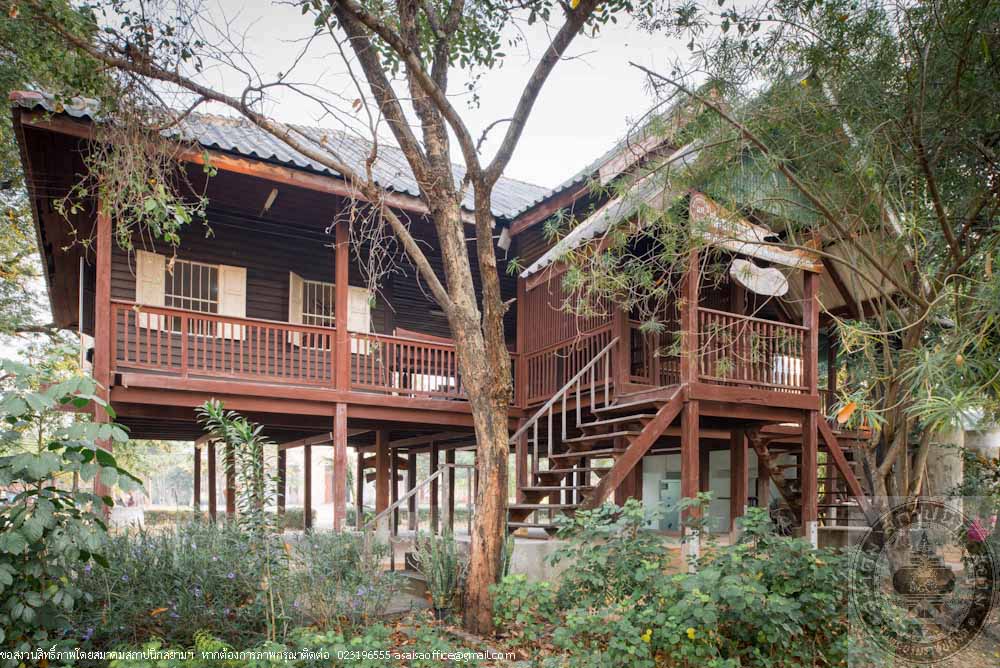
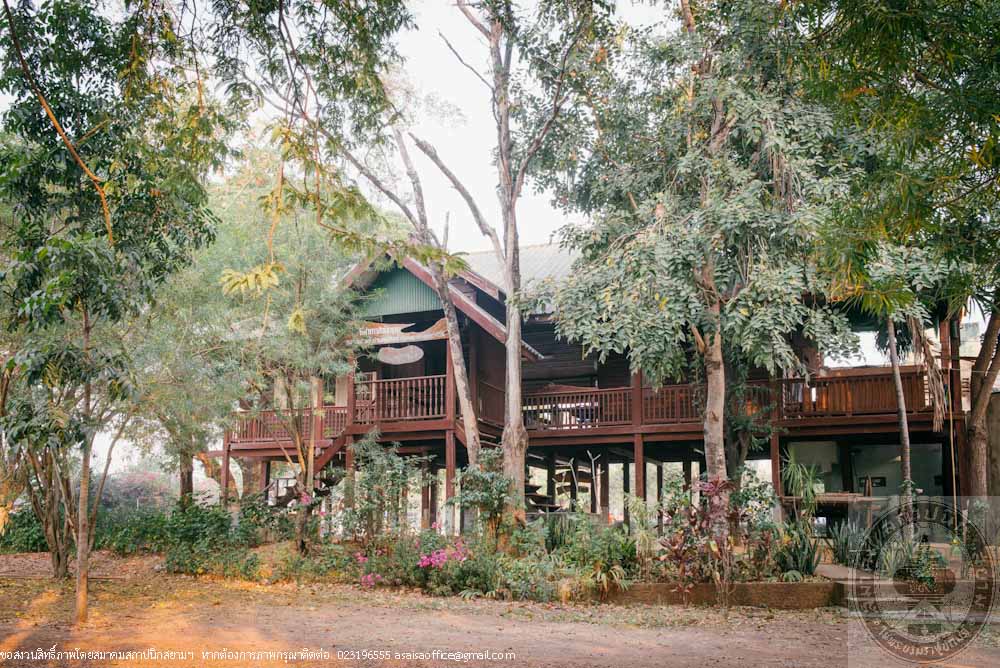
อุโบสถพื้นถิ่น วัดบรมคงคา
อ่านเพิ่มเติม
อุโบสถพื้นถิ่น วัดบรมคงคา
- ที่ตั้ง บ้านแวง หมู่ 1 ตำบลบ้านแวง อำเภอพุทไธสง จังหวัดบุรีรัมย์
- สถาปนิก/ผู้ออกแบบ ไม่ปรากฏหลักฐาน
- ผู้ครอบครอง วัดบรมคงคา
- ปีที่สร้าง คาดว่าสร้างราวพุทธศักราช 2452
ประวัติ
ผู้ที่มาตั้งบ้านแวงนั้น เดิมได้ย้ายมาจากแขวงเมืองล้านช้าง ประเทศลาว เดินทางมาเห็นความอุดมสมบูรณ์ของพื้นที่บริเวณนี้ จึงชวนกันตั้งหลักปักฐานและตกลงกันตั้งชื่อตามชื่อพืชในหนองว่า “หนองแวง” ต่อมามีอีกกลุ่มหนึ่งที่แยกตัวออกมาจากบ้านเหล่าแก่นท้าว อำเภอพยัคฆภูมิพิสัย จังหวัดมหาสารคาม จึงได้ร่วมกันสร้างบ้านเรือนเป็นบ้านแวงในปัจจุบัน โดยมีวัดบรมคงคาเป็นศูนย์กลางของชุมชน ก่อตั้งเมื่อ พุทธศักราช 2354 และมีสิมหรืออุโบสถพื้นถิ่น ได้รับพระราชทานวิสุงคามสีมาเมื่อวันที่ 12 มีนาคม พุทธศักราช 2452 ใช้ในการประกอบพิธีกรรมทางพุทธศาสนาและมีการซ่อมแซม ซึ่งจากบานประตูสิมได้มีการสลักข้อความว่า “สร้างเมื่อ พ.ศ.2467ล่วงถึงเมื่อปี พ.ศ.2469 จึงสำเร็จ พระเบ้าเป็นผู้นำสานุศิษย์และญาติโยมช่วยบำรุงไว้” ตั้งแต่อดีตสิมนี้มีความงดงามมากทำให้มีการเรียกขานคนในชุมชนว่า “คนบ้านแวงโบสถ์สวย” ต่อมาในวันที่ 18 ธันวาคม พุทธศักราช2539 กรมศิลปากรได้ขึ้นทะเบียนสิมหลังนี้เป็นโบราณสถาน หลังจากนั้นสิมก็เริ่มทรุดโทรมลงตามกาลเวลาและ มีปลวกกัดกินตามโครงสร้างระแนงไม้ ชาวบ้านได้เสนอแบบของบประมาณจากกรมศิลปากรเพื่อมาบูรณะสิมใหม่แต่ไม่ได้งบประมาณ ชาวบ้านจึงได้จัดทำบุญผ้าป่าและบุญกฐินจนสามารถรวบรวมเงินได้มากพอสำหรับการบูรณะสิมจนแล้วเสร็จ เมื่อวันที่ 2 กุมภาพันธ์ พุทธศักราช 2542 ต่อมาในพุทธศักราช 2557–2558 สาขาวิชาเทคโนโลยีสถาปัตยกรรม คณะเทคโนโลยีอุตสาหกรรม มหาวิทยาลัยราชภัฏบุรีรัมย์ ได้ทำการศึกษาประวัติ สำรวจ รังวัด และเขียนแบบทางสถาปัตยกรรมของอาคารไว้เพื่อการอนุรักษ์อาคารไว้เป็นมรดกทางวัฒนธรรมของชุมชนสืบไป
สิมวัดบรมคงคาเป็นสิมทึบแบบมีระเบียงรอบกว้าง 10.19 เมตร ยาว 14.48 เมตร ตั้งอยู่บนลานประทักษิณ ระเบียง ยกสูงกว่าระดับดิน 0.60 เมตร มีบันไดทางขึ้นด้านหน้าจำนวน 3 ขั้น ภายในสิมมีผังพื้นรูปสี่เหลี่ยมผืนผ้าขนาดกว้างประมาณ 5.59 เมตร ยาวประมาณ 9.39 เมตร ยกพื้นสูงจากระดับพื้นระเบียงประมาณ 1.20 เมตร ทำฐานแอวขัน มีบันไดจำนวน 5 ขั้น จำนวน 2 ชุด โดยมีเสาหานหรือเสาระเบียงที่ทำจากไม้พันชาด หน้าตัดเสาประมาณ 30 เซนติเมตร จำนวน 16 ต้น ผนังอาคารใช้การก่ออิฐดินดิบฉาบปูนหนาประมาณ 50 เซนติเมตร มีฮูปแต้มเป็นรูปยักษ์ 4 ตน ที่ผนังด้านหน้าของสิม และทำซุ้มหน้าต่างรูปนาคคู่อย่างงดงาม คาดว่าเป็นฝีมือของพ่อใหญ่ (จารย์) กาหลง ออมไธสง หลังคาเป็นทรงจั่วและมีหลังคากันสาด ยื่นคลุมทั้งสี่ด้านมุงด้วยกระเบื้องว่าว ส่วนประดับหลังคาตกแต่งด้วยช่อฟ้า ใบระกา และโหง่ความสูงของอาคารจากระดับพื้นบริเวณรอบอาคารถึงระดับอกไก่ประมาณ 7.63 เมตร ภายในเป็นโถงโล่งพื้นซีเมนต์ มีฐานชุกชีรองรับพระพุทธรูปสภาพอาคารในปัจจุบันยังคงความสมบูรณ์ตามลักษณะดั้งเดิม เพียงแต่สีของฮูปแต้ม หรือภาพจิตรกรรมฝาผนังภายนอกอาคารมีสีที่ซีดจางลง แต่ได้รับการอนุรักษ์จากกรมศิลปากรโดยการทาสารเคมีเคลือบผิวที่ฮูปแต้มแล้ว
Folk Ordination Hall, Wat Borommakhongkha
- Location: Baan Wang, Moo 1 Tambon Baanwang Phutthaisong District, Buriram
- Architect/Designer: Unknown
- Owner: Wat Borommakhongkha
- Year Built: Approximately in the year of 1909
History
The Pioneer to Baan Wang moved here from Lan Chang District of Laos after discovering the fertility of the soil in the area and decided to settle down and named the new community after an abundant swamp plant, “Nong Wang.” Later, a group of local folks separated themselves from Baan Lao Kan Tao, Payakkhapumpisai District, Mahasarakham joined in building houses that became Baan Wang today. Wat Borommakhongkha, founded in 1811, was the center of the community and has its own Ordination Hall or Sim. The temple was granted the land for establishing a central hall by the King on March 12, 1909. The sim has been used in Buddhist ceremonies and has undergone several repairs. Wordings engraved on the sim’s door stated, “Built in 1924 and completed in 1926. Pra Bao led the disciples and the laypeople to maintaining it.” Since the beginning, the sim was known for its stunning design and therefore the community people were also referred to as “People of Baan Wang, home of the beautiful chapel.” On December 18, 1996, the Fine Arts Department registered this sim as historical monument. The sim then began to deteriorate over time with wooden lath structure damaged by termites. The laypeople proposed a restoration plan to The Fine Arts Department to request for a funding but were denied. The people then hosted a robe offering ceremonies and were able to allocate sufficient funds to restore the sim and the restoration was completed on February 2, 1999. From 2014 to 2015, Architectural Technologies students from the Industrial Technologies Department of Buriram Rajabhat University studied the history of the hall, conducted a survey and created the architectural drawing of the building in an effort to preserve the community’s cultural heritage.
Wat Borommakhongkha’s sim is an opaque building of 10.19 meters wide and 14.48 meter long surrounded by a terrace situated on pratakshina yard. The terrace was raised 0.60 meter above ground with three-step stairs at the front entrance. The sim’s interior space is rectangular, 5.59 meter wide and 9.39 meter long and was raised approximately 1.20 meter above the terrace level. There were also a high tiered base with two sets of five-step stairs, sixteen pillars made of Erythrophleum wood 30 centimeter thick on the terrace, the building walls built of raw clay brick plastered with cement of 50 centimeter thick with a mural paintings of four mythical giants on the front wall of the sim. The arch window is beautifully decorated with a pair of Nagas which was believed to be the work of a respected elderly man, Kalong Omthaisong. A gable roof with extended eaves covering all four sides of the building thatched with diamond-shaped tiles and decorated with roof ornaments including Chofa and Bai Raka. The height of the building from the level of the floor area around the building to the level of ridgepole measured approximately 7.63 meters. The interior is an open space with cement floor with a plaster base of a Buddha statue.
The building today remained in its original condition except for the faded mural paints on the outside of the building. To preserve murals, the Department of Fine Arts applied chemical coating over the paintings.
Ancestors of many of the elders in this village were involved in the construction of this sim. They helped in the kneading of raw clay and baking them into bricks, producing roof tiles, finding Erythrophleum wood in the forest and transporting sand from the Moon River to be used in the construction of the building. They worked together with a Kula native artist who painted the mural on the back exterior wall depicting the story of Pra Malai, Lord Buddha’s apostle, who traveled to Hell and Heaven. It took faith and harmonies of the people in the community to complete the construction and to promote virtue and morality within the community, Wat Borommakhongkha’s sim has been regarded as a historical monument that reflects the mutuality, the local tradition and the way of life of the people of Baan Wang towards Buddhism that is still continued. Wat Borommakhongkha’s sim, therefore, possess the community’s historical and spiritual values. The building shape that was beautifully proportioned indicating the architectural craftsmanship and engineering while the mural decoration showcasing the aesthetic quality of folk arts making it an excellent example in the study of architecture.
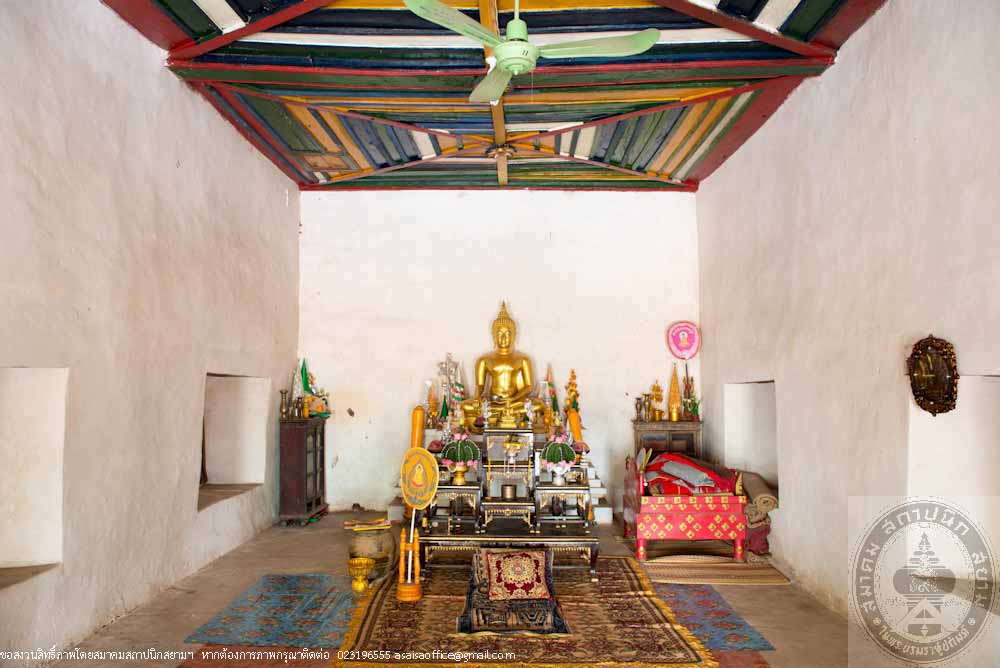
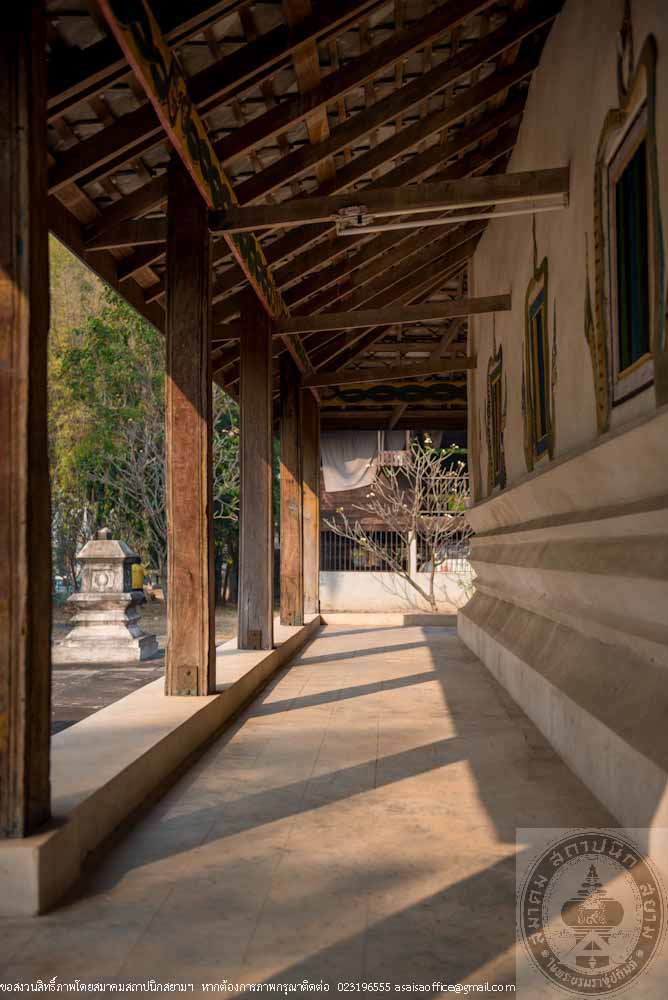
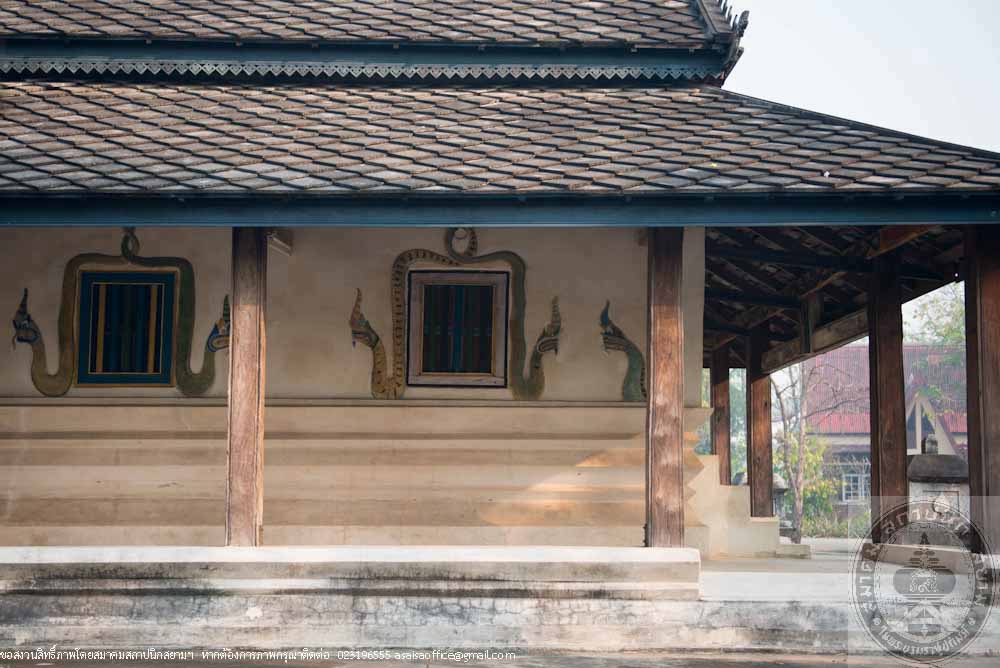
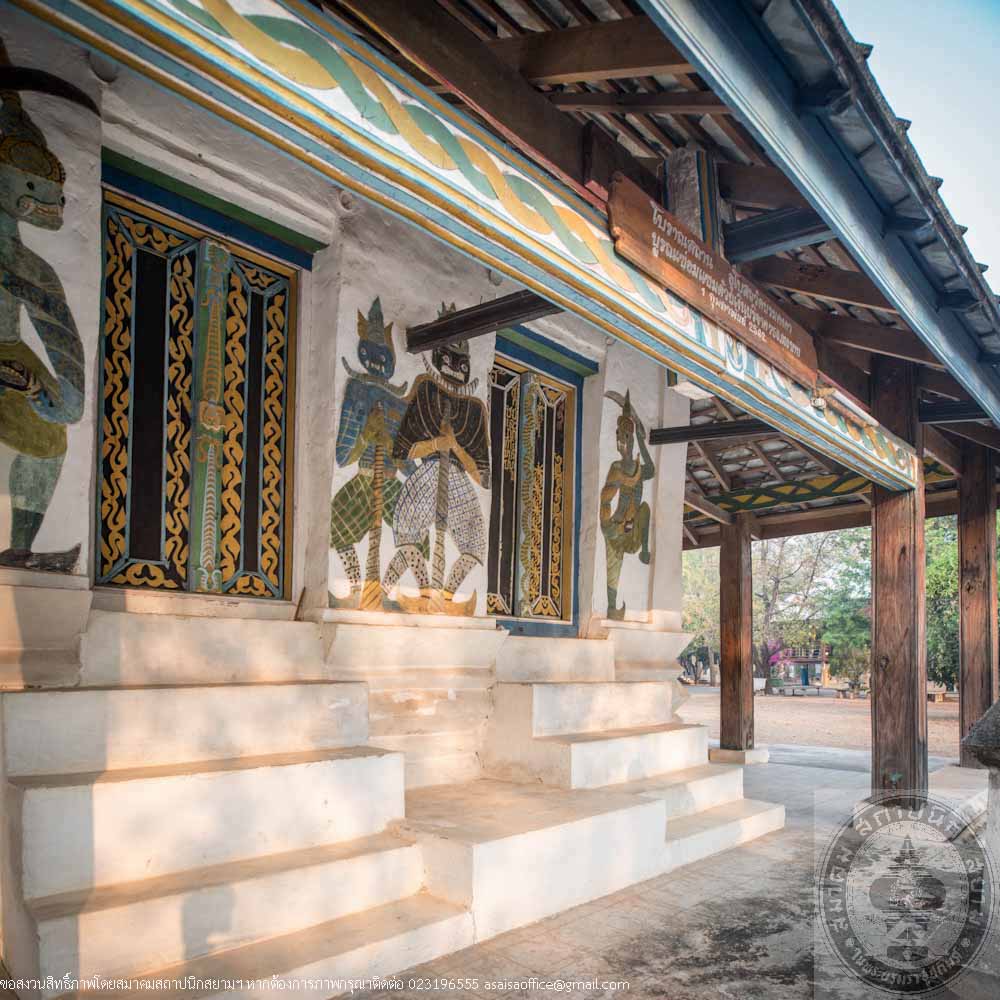
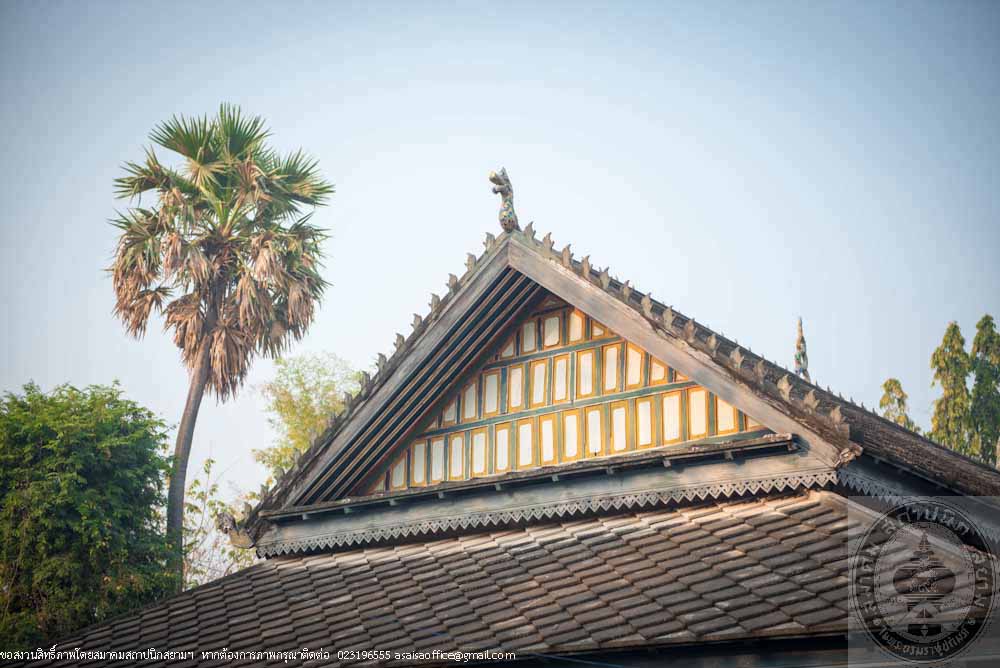
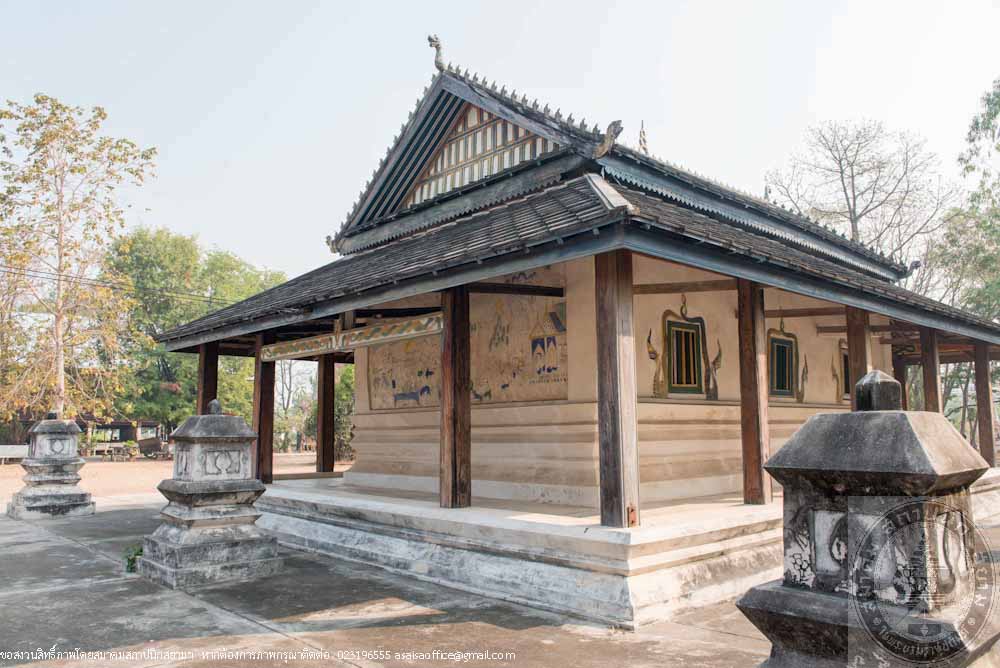
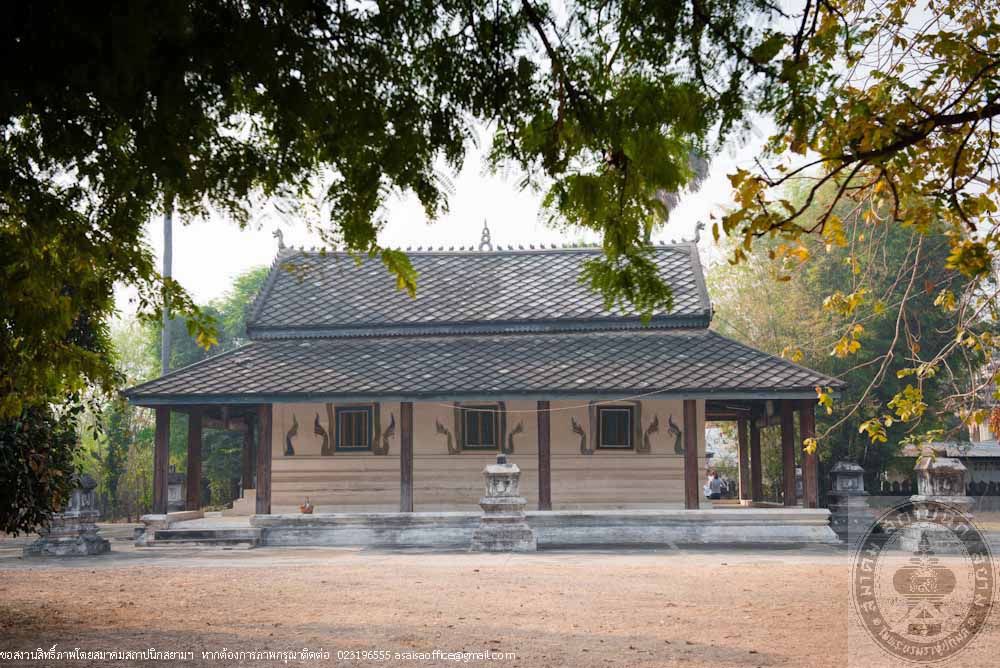
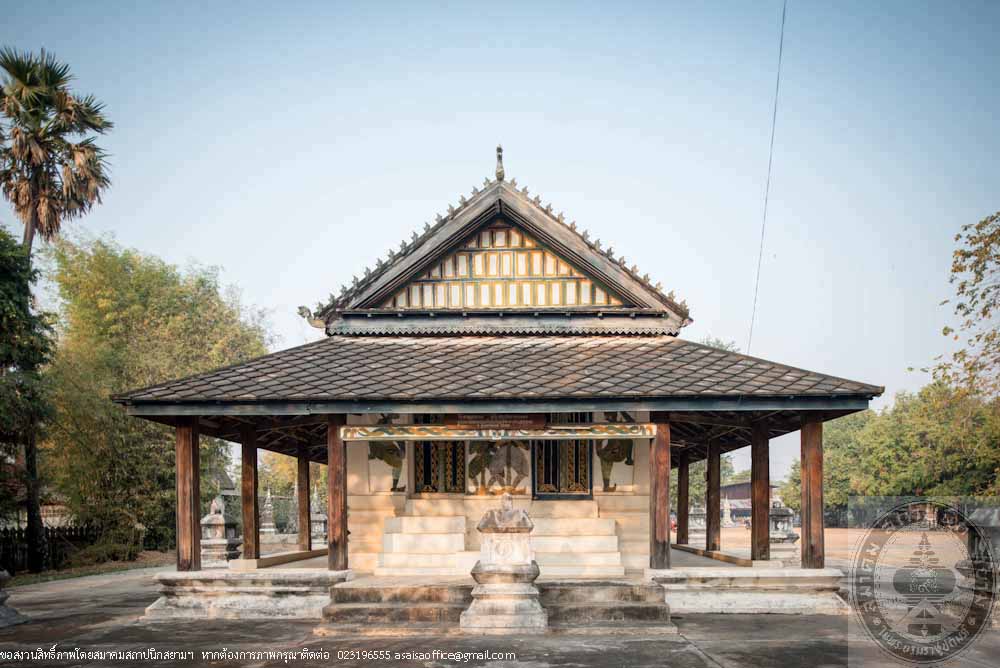
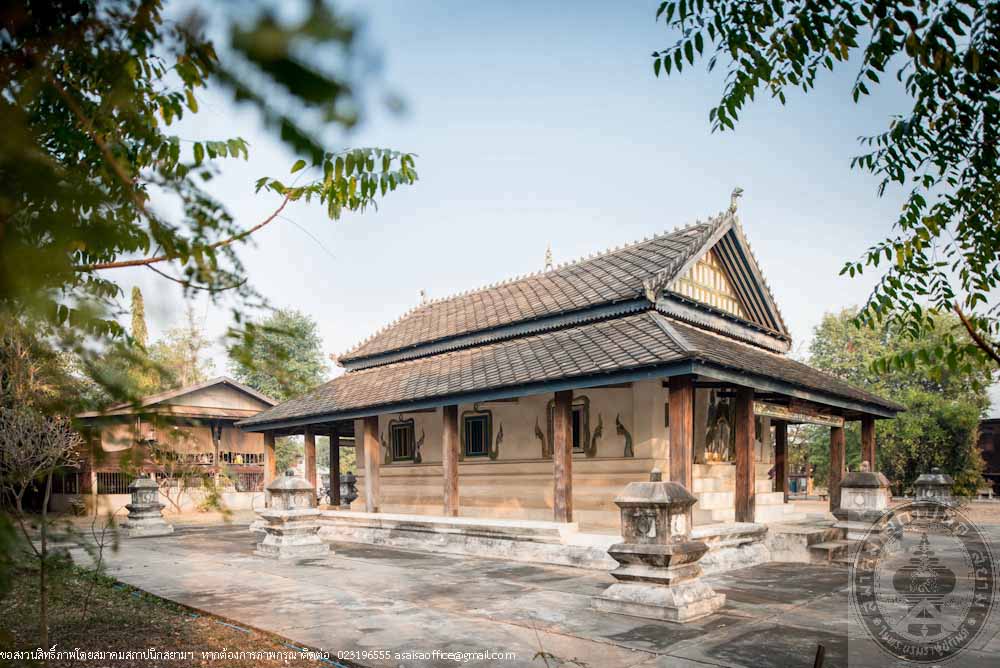
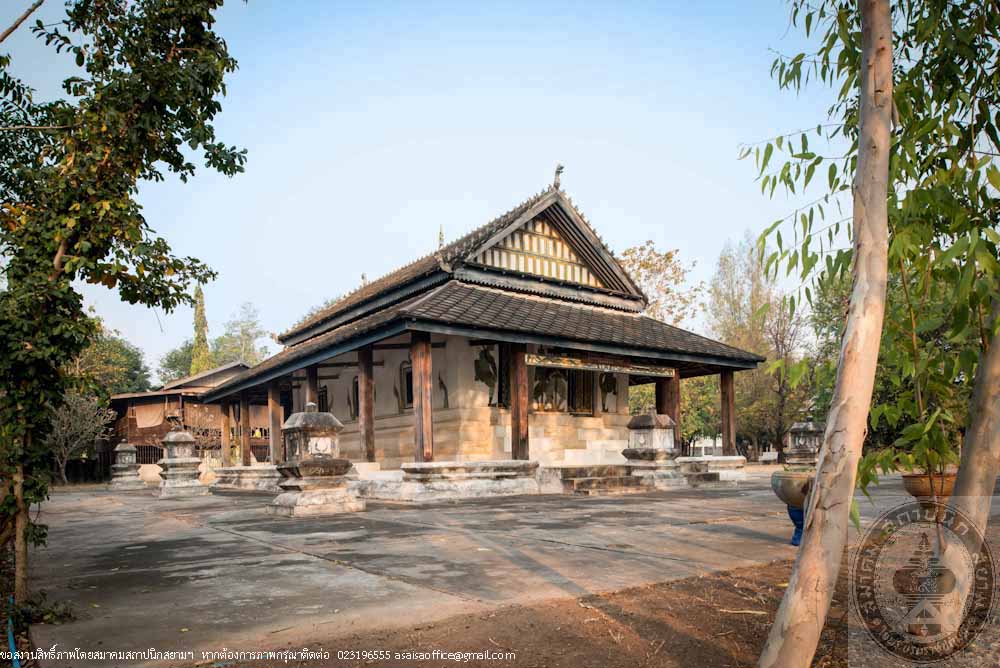
กุฏิพระอริยวงศาจารย์ (กุฏิแดง)
อ่านเพิ่มเติม
กุฏิพระอริยวงศาจารย์ (กุฏิแดง)
- ที่ตั้ง วัดมณีวนาราม ตำบลในเมือง อำเภอเมือง จังหวัดอุบลราชธานี
- สถาปนิก/ผู้ออกแบบ ไม่ปรากฏนาม
- ผู้ครอบครอง วัดมณีวนาราม
- ปีที่สร้าง พุทธศักราช 2371
ประวัติ
กุฏิพระอริยวงศาจารย์ หรือที่เรียกกันโดยทั่วไปว่า กุฏิแดง เดิมเคยเป็นที่จำพรรษาของท่านเจ้าคุณพระอริยวงศาจารย์ญาณวิมลอุบลคณาภิบาลสังฆปาโมกข์ (สุ้ย) เจ้าคณะสงฆ์เมืองอุบลราชธานี เมื่อพุทธศักราช 2371 ในสมัยพระบาทสมเด็จพระนั่งเกล้าเจ้าอยู่หัว รัชกาลที่ 3
กุฏิแดงแห่งนี้เป็นโบราณสถานที่สำคัญยิ่งอีกแห่งหนึ่งของจังหวัดอุบลราชธานี มีเอกลักษณ์อันโดดเด่นทางสถาปัตยกรรมไทย และสีสันอันงดงาม เป็นอาคารสร้างด้วยไม้ชั้นเดียว ตั้งเสา ยกพื้นสูง ตีฝาผนังแบบเรือนฝาไม้ปะกน ใช้เทคนิคการเข้าเดือยไม้แบบโบราณ หลังคาแต่เดิมมุงด้วยไม้แป้นเกล็ด และเปลี่ยนมาใช้กระเบื้องมุงในภายหลัง ภายในแบ่งเป็น 4 ห้อง มีห้องโถงใหญ่ 2 ห้อง ห้องเล็กด้านข้างอีก 2 ห้อง ประดับลูกกรงไม้ขนาดเล็กที่ขอบหน้าต่างและระเบียงด้านหน้า หน้าต่างระหว่างห้องด้านทิศเหนือมีการเขียนรูปเทวดาประดับไว้ 2 บานและลายพันธุ์พฤกษาอีก 2 บาน
ต่อมาในพุทธศักราช 2556 วัดมณีวนาราม องค์การบริหารส่วนจังหวัดอุบลราชธานี ชาวบ้าน และกรมศิลปากรได้ร่วมกันบูรณะอาคารหลังนี้ เพื่ออนุรักษ์ไว้เป็นมรดกทางศิลปวัฒนธรรมอันทรงคุณค่าของจังหวัดอุบลราชธานีสืบไป โดยการบูรณะสามารถรักษาความแท้ในด้านรูปแบบ วัสดุ ฝีมือช่างและเทคนิควิธีการก่อสร้างรวมทั้งสภาพโดยรอบไว้ได้เป็นอย่างดี
Phra Ariyawongsachan’s Residence (Kuti Daeng)
- Location: Wat Manee Wanaram, Muang Ubon Ratchathani
- Architect/Designer: Unknown
- Owner: Wat Manee Wanaram
- Year Built: 1828
History
Phra Ariyawongsachan’s residence, commonly called Kuti Daeng, was once a residence of Phra Ariyawongsachan Yanwimon U-bonkanapiban Sangkhapamok (Sui), the Lord Abbot of Ubon Ratchathani Monastery in the year 1828 during the reign of King Rama III.
Kuti Daeng is another significant historic site of Ubon Ratchathani with unique identity of Thai architecture and stunning colors. A single storey wooden structure built on stilts and raised high above ground with Pakon wall panel, a grid of tall rectangles and ancient technique of wood joinery. The roof was originally built of wood pallets and later replaced with roofing tiles. The residence was divided into four rooms with two big halls and two small rooms on the side. Window frames and front verandah were decorated with small wooden balusters. Two of the window panels between the rooms to the north portrayed the Buddhist deity and another two window panels contained painting of botanical designs.
The restoration of the residence in 2013 was a joint project of Wat Manee Wanaram, the Provincial Administration Organization of Ubon Ratchathani, the local people and the Department of Fine Arts in order to maintain and inherit the valuable arts and culture of Ubon Ratchathani. The restoration was able to preserve the authentication of the structure, material, craftsmanship and construction techniques as well as the condition of the surrounding area.
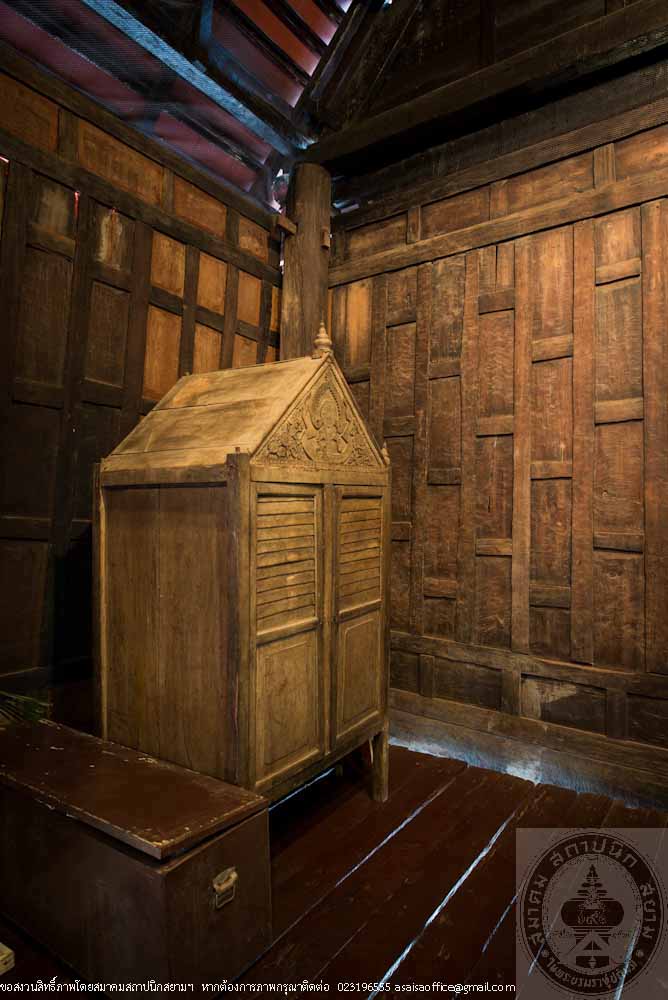
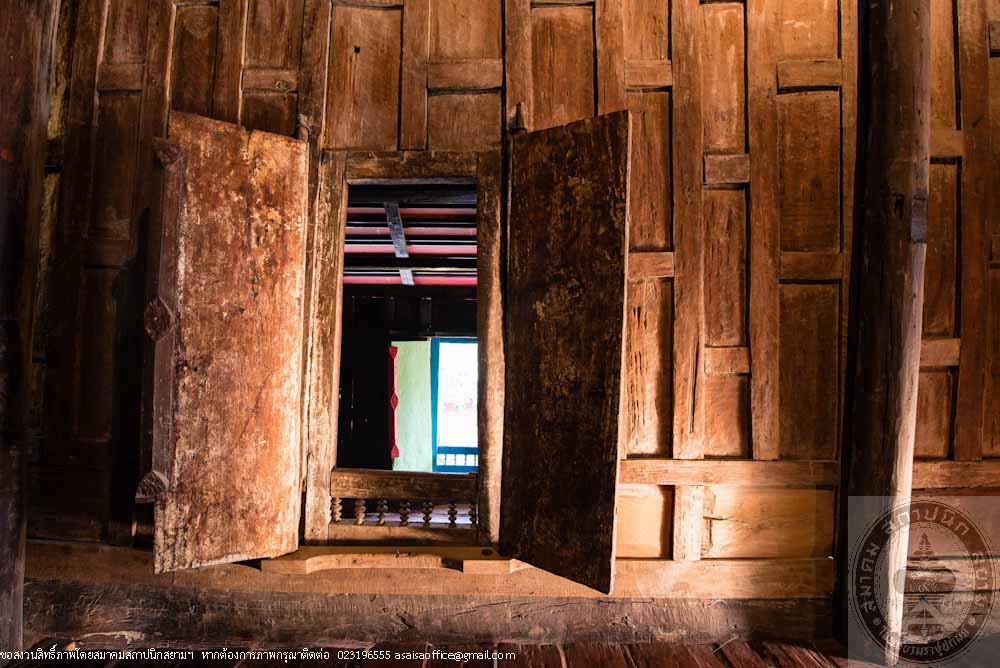
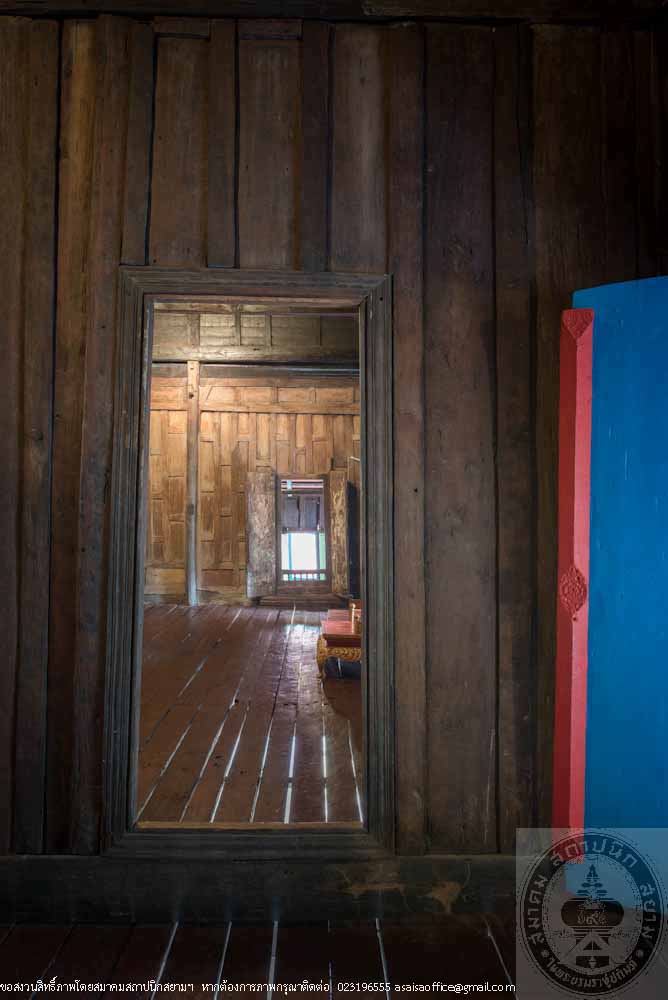
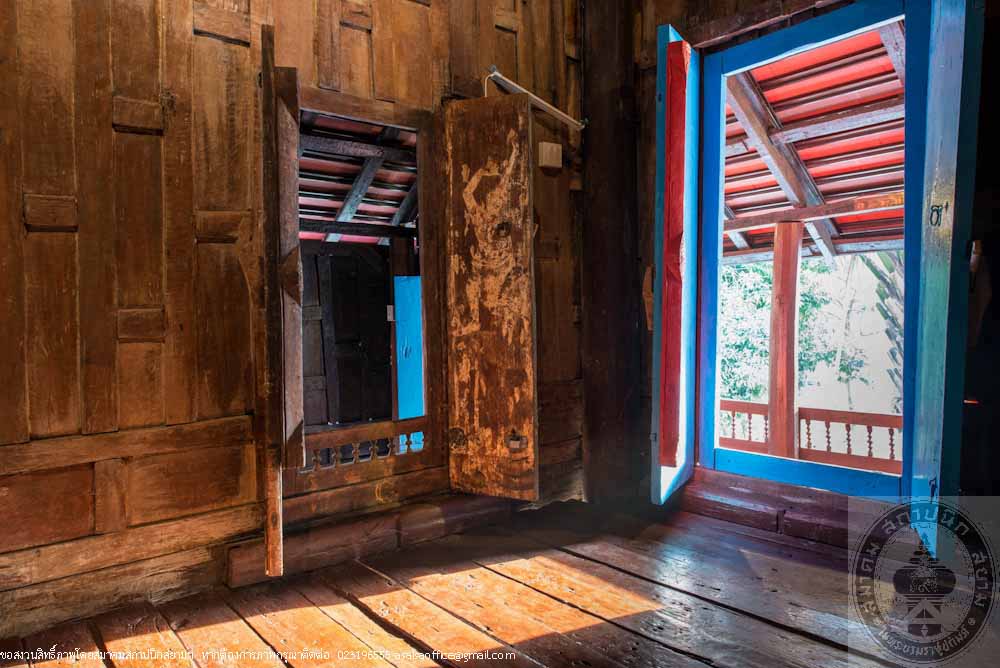
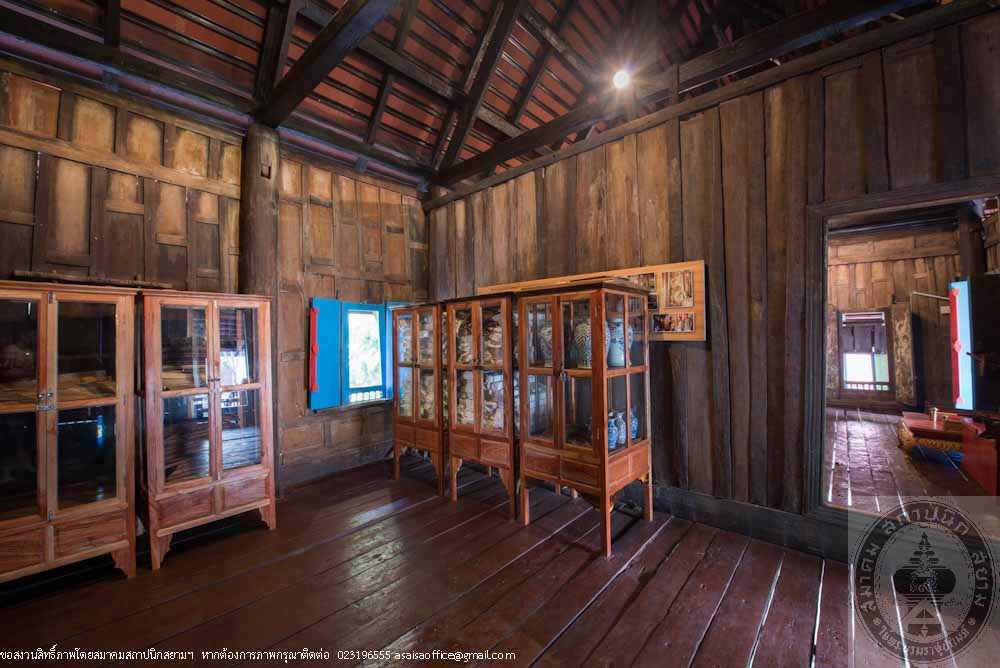
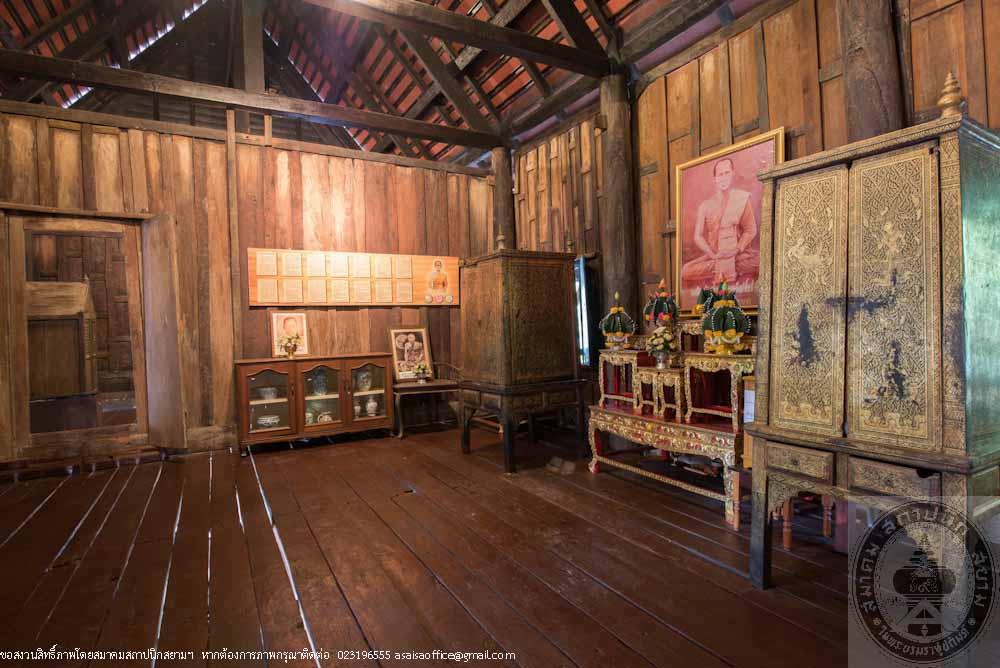
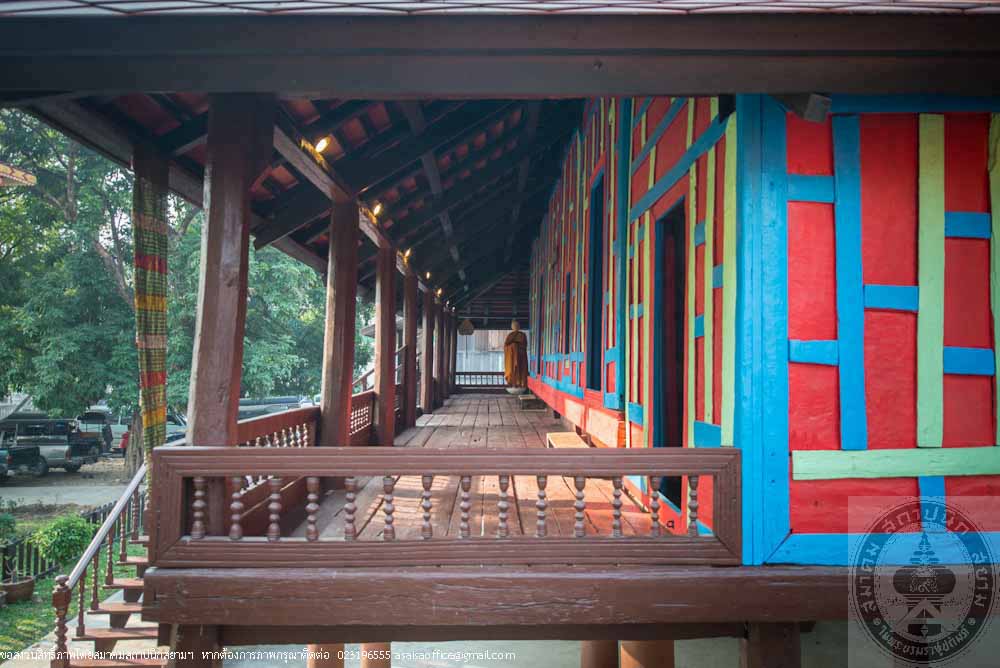
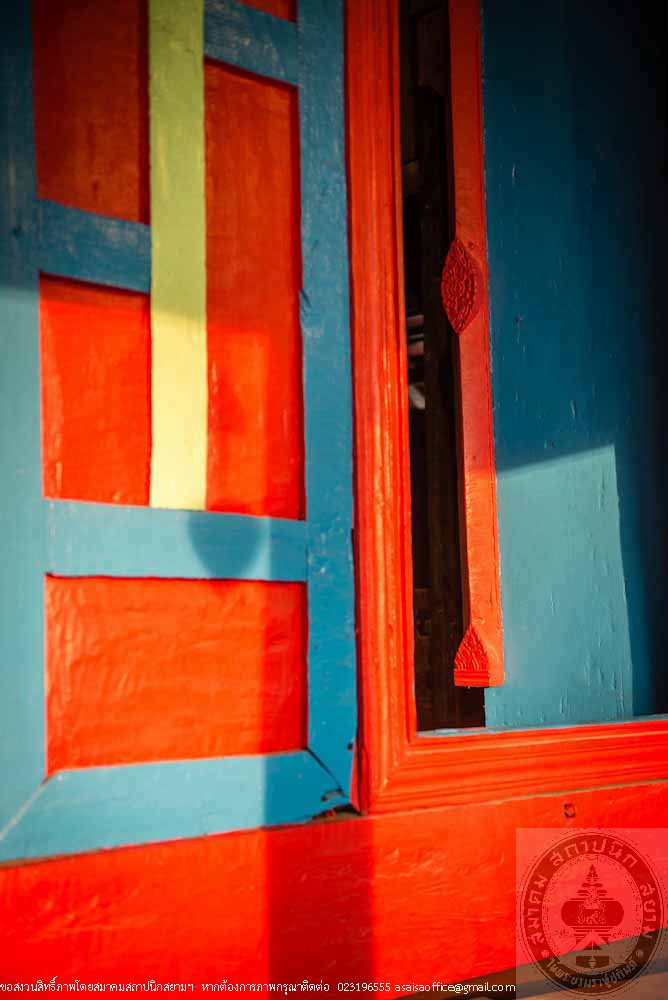
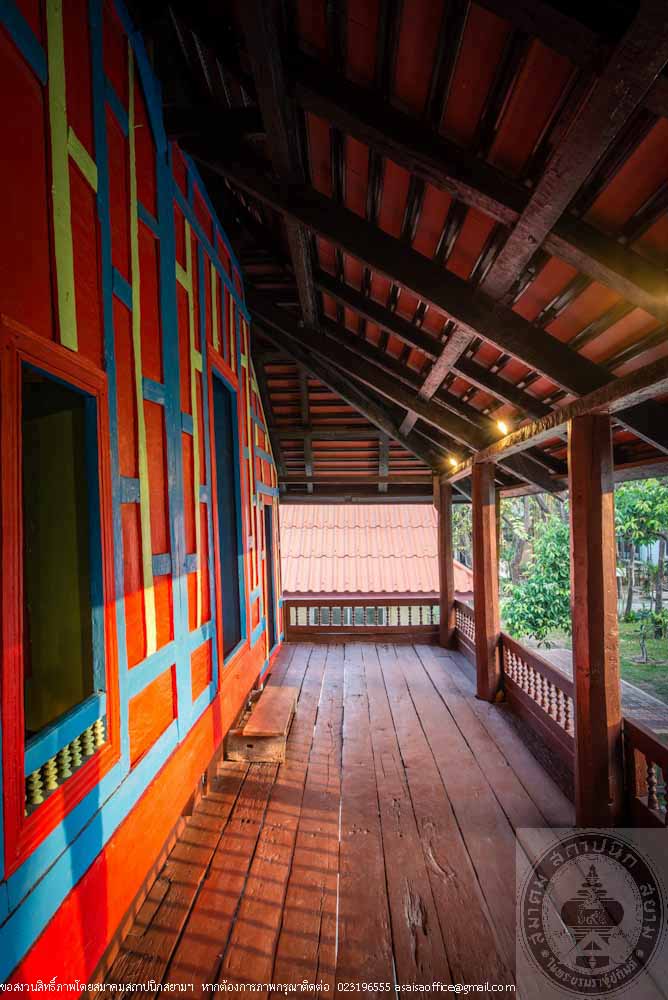
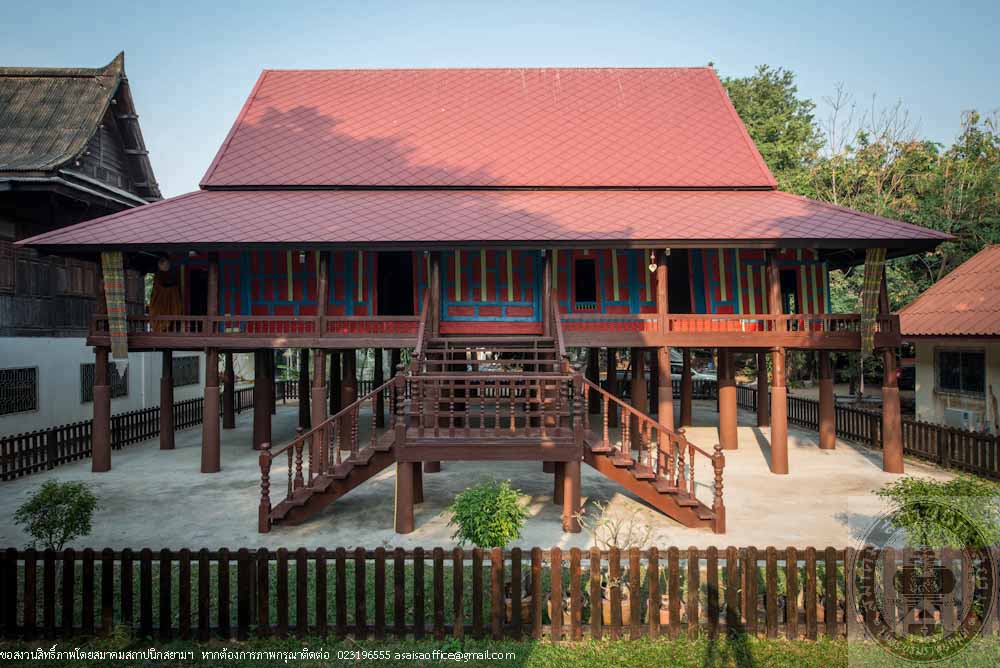
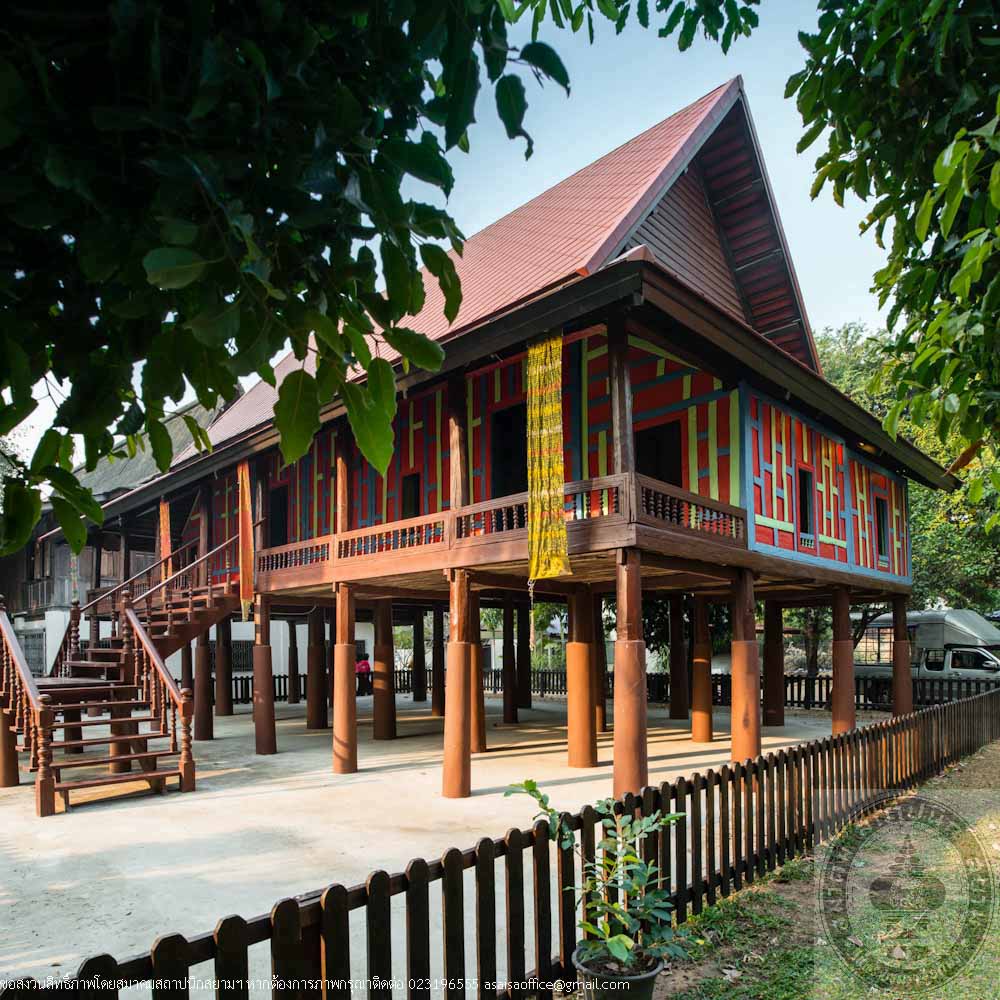
โบสถ์โรงเรียนเชียงใหม่คริสเตียน
อ่านเพิ่มเติม
โบสถ์โรงเรียนเชียงใหม่คริสเตียน
- ที่ตั้ง เลขที่ 19 ถนนเชียงใหม่–ลำพูน ตำบลวัดเกต อำเภอเมือง จังหวัดเชียงใหม่
- สถาปนิก/ผู้ออกแบบ ดร. มาเรียน เอ ซีค
- ผู้ครอบครอง โรงเรียนเชียงใหม่คริสเตียน
- ปีที่สร้าง พุทธศักราช 2433
ประวัติ
คริสต์ศาสนานิกายโปรแตสแตนท์คณะอเมริกันเพรสไบทีเรียนในแผ่นดินล้านนาได้เริ่มต้นเมื่อหมอดาเนียล แมคกิลวารี ได้เข้ามาเผยแพร่คริสต์ศาสนาควบคู่กับการนำวิทยาศาสตร์สมัยใหม่เข้ามาเผยแพร่ในเชียงใหม่ในรัชสมัยพระบาทสมเด็จ พระจอมเกล้าเจ้าอยู่หัว จึงทรงโปรดเกล้าฯ ให้มีพระราชกระแสรับสั่งไปตามหัวเมืองรายทางที่มิชชันนารีเดินทางผ่านเพื่ออำนวยความสะดวกและความปลอดภัย ภายหลังที่หมอดาเนียล แมคกิลวารี ได้ออกเดินทางเผยแพร่ศาสนาคริสต์อยู่ในแผ่นดินล้านนา การเติบโตของคริสตจักรจึงมีศูนย์กลางอยู่ที่เชียงใหม่ จากจุดเริ่มต้นนี้เองจึงเกิดปัญหาการขัดแย้งทางด้านศาสนา ความเชื่อ และอำนาจนิยม การไม่เปิดรับเสรีภาพทางศาสนาของเจ้ากาวิโลรส เจ้าผู้ครองนครเชียงใหม่ในขณะนั้น ที่ไม่ยอมให้คนในล้านนาหันไปนับถือคริสต์ศาสนา จึงนำมาซึ่งเหตุการณ์การประหารชีวิตหนานชัยและน้อยสุริยะที่ฝืนจารีตและขนบธรรมเนียมประเพณีดั้งเดิมไปนับถือศาสนาใหม่ ซึ่งสร้างความไม่พอใจแก่เจ้ากาวิโลรสเป็นอย่างมาก เหตุการณ์ในครั้งนั้นสร้างความหวาดวิตก แก่คริสต์ศาสนิกชนและคณะมิชชันนารี การดำเนินการเผยแพร่ศาสนาจึงเป็นไปอย่างยากลำบากและโดนขัดขวางในทุกรูปแบบจากผู้ปกครอง หมอดาเนียล แมคกิลวารี ได้นำปัญหานี้ปรึกษากับกงสุลใหญ่สหรัฐอเมริกา และได้นำความดังกล่าวขึ้นกราบบังคมทูลพระบาทสมเด็จพระจุลจอมเกล้าเจ้าอยู่หัวผ่านทางข้าหลวงใหญ่ และในเวลาต่อมาทรงได้มีพระบรมราชโองการ “เรื่องการถือศาสนา” ประกาศเมื่อวันที่ 8 ตุลาคม พุทธศักราช 2421 ที่มีใจความการอนุญาตให้ประชาชนนับถือศาสนาใดก็ได้อย่างเสรี จึงนับเป็นการให้เสรีภาพทางการนับถือศาสนาอย่างแท้จริง ภายหลังจากพระบรมราชโองการ “เรื่องการถือศาสนา” (Edict of Toleration) เป็นผลทำให้มิชชันนารีได้ขยายงานออกไปอย่างกว้างขวาง
กระทั่งมีคริสต์เตียนผู้เลื่อมใส คือ หนานนันทา ได้ยกที่ดินมรดกให้เพื่อสร้างโบสถ์คริสตจักรเชียงใหม่บริเวณริมฝั่งแม่น้ำปิงทางทิศตะวันออก โดยมี ดร.มาเรียน เอ ซีค มิชชันนารีชาวอเมริกันซึ่งทำงานอยู่กับหมอดาเนียล แมคกิลวารี เป็นผู้ออกแบบและก่อสร้าง ใช้งบประมาณในการก่อสร้าง 7,000 เหรียญสหรัฐ และคนท้องถิ่นสมทบอีก 1,800 บาท หลังจากที่สร้างโบสถ์ แล้วเสร็จ ได้ทำพิธีฉลองในวันที่ 9 สิงหาคม พุทธศักราช 2434มีพิธีนมัสการมอบถวายพระวิหารของพระเจ้า โดยมีหมอดาเนียล แมคกิลวารี เป็นผู้เทศนา และ ดร.วิลเลียมคลิ๊ฟตัน ดอด์ เป็นผู้อธิษฐานมอบถวายโบสถ์แด่องค์พระผู้เป็นเจ้า โบสถ์แห่งนี้จึงนับเป็นประจักษ์พยานแห่งเสรีภาพในการนับถือศาสนาในแผ่นดินล้านนา ต่อมาในพุทธศักราช 2511 เมื่อศาสนาคริสต์นิกายโปรแตสแตนท์ในจังหวัดเชียงใหม่ได้แพร่ขยายจนเป็นที่ยอมรับโดยทั่วไป และมีผู้นับถือจำนวนเพิ่มมากขึ้น จึงทำให้โบสถ์คับแคบคณะธรรมกิจคริสต์จักร์ที่ 1 เชียงใหม่จึงได้หารือกันและสร้างโบสถ์หลังใหม่ขึ้น ณ เลขที่ 10 ถนนเจริญราษฎร์ตำบลวัดเกต อำเภอเมือง จังหวัดเชียงใหม่ เพื่อรองรับการประกอบศาสนกิจและจำนวนสมาชิกที่เพิ่มมากขึ้นโบสถ์คริสตจักรหลังนี้จึงถูกเลิกใช้ไป และได้โอนกรรมสิทธิ์ในการครอบครองให้แก่ “โรงเรียนเชียงใหม่คริสเตียน”โดยให้ใช้เป็นสถานที่อบรมคริสต์จริยธรรมแก่นักเรียนและเป็นสัญลักษณ์ของโรงเรียนมาจนถึงปัจจุบัน
โบสถ์โรงเรียนเชียงใหม่คริสเตียนเป็นสถาปัตยกรรมยุโรปแห่งแรกในจังหวัดเชียงใหม่ สร้างด้วย “ไม้สักทอง” ทั้งหลัง โดยมีการผสมผสานเข้ากับรูปแบบการจัดวางผังวิหารหลวงทางพุทธศาสนาแบบล้านนาคือ มีการย่อหน้ามุข หน้า 3 หลัง 2 มีหอระฆังสูงต่อขึ้นไปเหนือมุขด้านหน้า เพื่อใช้ในการประกอบพิธีทางศาสนาด้านหลังมีห้องรับรอง 2 ห้อง หลังคามุงด้วยกระเบื้องลอน บานประตูหน้าต่างลูกฟักไม้ ซ้อนด้วยบานกระจก 2 ชั้น แบบเลื่อนขึ้น–ลง มีเสาหลวงรับน้ำหนักคู่กลาง 4 คู่ ผนังด้านนอกตีแบบไม้ซ้อนเกล็ดทั้งหลัง ฝ้าเพดาน มีช่องไม้ระแนงทำเป็นรูปตารางเพื่อระบายความร้อน ห้องโถงกลางตำแหน่งผู้เทศนามีพื้นไม้ยกระดับขึ้นมา 2 ชั้นชั้นละ 20 เซนติเมตร หน้าต่างหอระฆังเป็นแบบบานกระทุ้งไม้ทั้ง 4 ด้าน เหนือหอระฆังมีไม้กางเขนสีขาวประดับอยู่ บ่งบอกความเป็นศาสนสถานของคริสเตียน ใต้หอระฆังมีโถงเล็กด้านหน้าเป็นประตูใหญ่มีบันไดทางขึ้น3 ด้าน โบสถ์โรงเรียนเชียงใหม่คริสเตียนเป็นอาคารต้นแบบในการสร้างสรรค์สถาปัตยกรรมโบสถ์คริสต์ในภาคเหนือและชุมชนอันห่างไกลในแผ่นดินล้านนา โดยตลอดระยะเวลาที่ผ่านมาได้รับการดูแลรักษาให้อยู่ในสภาพดี สามารถรักษาคุณค่าทางประวัติศาสตร์และทางสถาปัตยกรรมเอาไว้ได้อย่างน่าชื่นชม
The Church at Chiangmai Christian College
- Location: 19 Chiangmai-Lamphun Road, Tambon Wat Ket, Amphoe Mueang Chiang Mai
- Architect/Designer: Dr. Marion A. Cheek
- Owner: Chiangmai Christian College
- Year Built 1890
History
The Presbyterian Christian, a United States Protestant, began its passage in the Kingdom of Lanna through the work of Dr. Danial McGilvary, an American physician who brought Christianity along with modern science into Chiangmai during the reign of King Rama IV. The King issued a royal command for each provinces along the mission’s route to accommodate and provide safety to the missionaries. During the time when Dr. McGilvary traveled and preached Christian faith in the Kingdom of Lanna, Chiangmai became the center of the Christianity growth and therefore caused conflicts over religious beliefs and authoritarian. Chao Kawilorot, King of Chiangmai, denied freedom of religions and forbade the local from converting to Christianity which led to the execution of Nan Chai and Noi Suriya who violated their original traditions and customs and converted to the new religion, which displeased Chao Kawilorot. The incident worried the Christians and the missionaries, causing hardship in the spreading of the religion as it was suppressed in all form by the authority. Dr. Daniel McGilvary discussed the problem with the Consul General of the United States of America who reported it to King Rama V through a high commissioner. The King later issued an edict of “Religious Toleration” on October 7th, 1878 allowing the people to embrace any religions of their own choices and was regarded as a genuine right to religious freedom in the Kingdom. The Issuance of the Edict of Religious Toleration allowed the missionaries’ work to expand widely.
Shortly after, Norn Nanta, a devoted Christian, donated his inherited property to build Chiangmai’s Church of Christ on the eastern bank of Ping River. The church was designed and constructed by Dr. Marion A Cheek, an American missionary who worked for Dr. Danial McGilvary. After the construction of the church is completed, an opening ceremony was held on August 9th, 1891 whereas the consecration ceremony of the Cathedral Church of God was conducted by Dr. Daniel McGilvary with Dr. William Clifton Dodd performing the solemn rite of consecration. Thus, this church is regarded as the eyewitness of religious freedom in the Kingdom of Lanna. In 1968, when protestant Christian spread and was accepted throughout Chiangmai resulting in an increasing number of followers, the church became too small. Dhammakij Church 1 of Chiangmai then agreed to build a new chapel at 10 Charoenrat Road, Tambon Wat Ket, Muang Chiangmai to house religious ceremonies and support the rapid growth of their members. The First Church therefore fell into disuse and the property ownership was transferred to “Chiang Mai Christian College.” The site was dedicated to the study of the Christian Ethics for the students and has become the symbol of the school up until these days. The Church of Chiangmai Christian College was the first European architecture in Chiangmai, built entirely of “golden teak” with integrated layout designs of Lanna style Buddhist chapel such as the three-tiered roof in the front and two in the back and the bell tower above the front roof which was used in religious ceremonies while the back of the building consists of two recreational rooms. Carved roofing, mullion windows and doors with double glass shutters sliding up and down, 4 pairs of center supporting columns, horizontally overlapped wood siding on exterior walls and wood slat ceiling to add ventilation. The pulpit consists of two layers of raised wooden platforms each at 20 centimeter high. The bell tower has awning windows on all four sides with a white cross indicating the church of Christ. Under the bell tower is a small lobby with a large front door with stairways on 3 sides of the building. The Church of Chiangmai Christian College is a prototype of Christian church architecture in the north as well as other remote areas in the Kingdom of Lanna. Throughout the years, the church has been well maintained and is in good condition giving it praiseworthy capability to preserve its own historical and architectural values.
